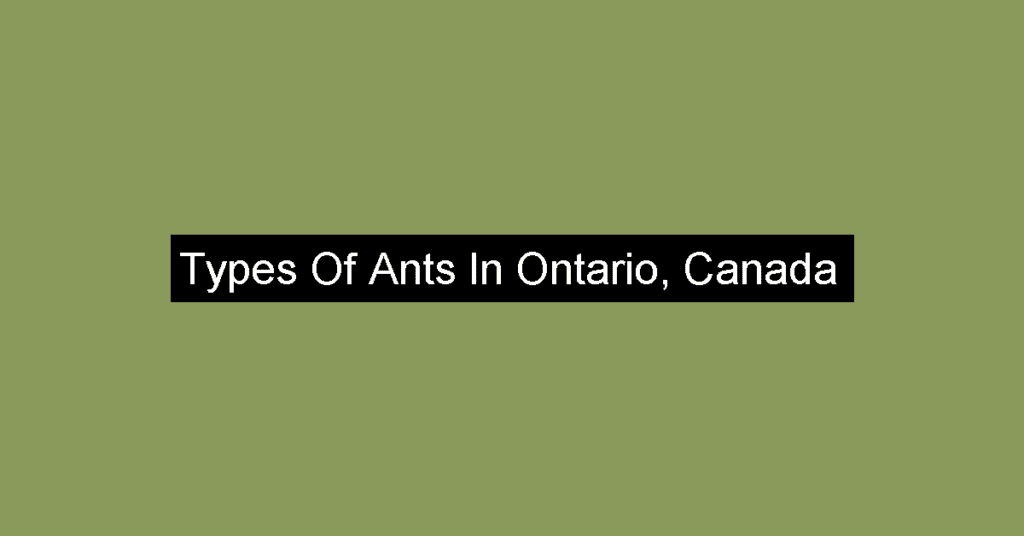Ontario, Canada is a vast region located in the eastern part of the country. It is bordered by Quebec to the east, Manitoba to the west, and the United States to the south.
Ontario is known for its diverse environment, ranging from dense forests to sprawling lakes and rivers. The region experiences a humid continental climate, with warm summers and cold winters.
This climate supports a wide variety of animal species, including moose, black bears, beavers, and wolves. Ontario’s natural environment is a source of pride for its residents and a draw for tourists from around the world.
.
Types Of Ants In Ontario, Canada
The Types Of Ants In Ontario, Canada are listed here: Funnel Ants, Rover Ants, Carpenter And Sugar Ants, Acrobat Ants, Dolly Ants, Forelius, Wood Ants, Formicoxenus, Harpagoxenus, Moisture Ants, Leptothorax, Trailing Pharaoh And Timid Ants, Mite-Eating Ants, Furrowed Ants, Amazon Ants, Porthole Ants, Winter Ants, Hairy Curltail Ants, Protomognathus, Fire Ants, Leaf-Litter Ants, Vampire Ants, Tapinoma, Slave-Making Ants, Funnel Ants, Winnow Ants, Tennessee Collared Ants, Treats Winnow Ants, Hairless Rover Ants, American Carpenter Ants, Hercules Ants, Carpenter Ants, Black Carpenter Ants, Carpenter And Sugar Ants, Acrobat Ants, Acrobat Ants, Dolly Ants, Dolly Ants, Dolly Ants, Wood Ants, Silver Ants, Blood-Red Field Ants, Wood Ants, Silky Ants, Wood Ants, Wood Ants, Wood Ants, Fuzzy Mount Ants, Northern Red Wood Ants, Pale Field Ants, Wood Ants, Wood Ants, Wood Ants, Wood Ants, Harpagoxenus Canadensis, Cornfield Ants, Yellow Meadow Ants, Moisture Ants, Labour Day Ants, Black Garden Ants, Moisture Ants, Mossy Thin Ants, Leptothorax Retractus, Furrowed Ants, Alaskan Fire Ants, Furrowed Ants, Furrowed Ants, Furrowed Ants, Furrowed Ants, Furrowed Ants, Furrowed Ants, Big Headed Ants, Amazon Ants, Amazon Ants, Amazon Ants, Small Honey Ants, Spider Egg Ants, Leaf-Litter Ants, Diecks Slender Ants, Vampire Ants, Miniature Trap-Jaw Ants, Odorous House Ants, Slave-Making Ants, Slave-Making Ants, Long-Spined Acorn Ants.
If you’ve found some other ants in this region, contact us, and we will add them to the list!
1) Funnel Ants, Aphaenogaster
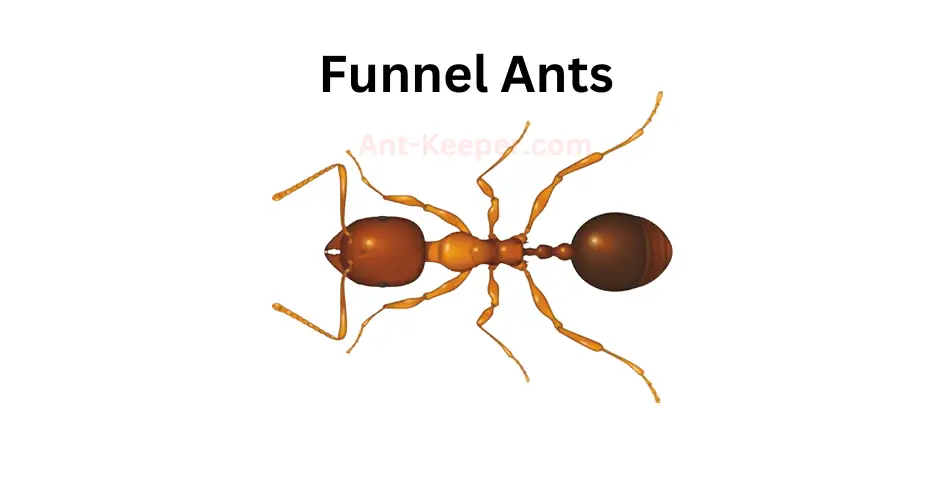
The Funnel Ants, also known as Aphaenogaster ants, are a species of ants that are commonly found in various habitats around the world.
These ants are known for their unique nesting behavior, where they construct funnel-shaped nests that are typically located in soil or leaf litter.
The Funnel Ants are relatively small in size, with workers measuring between 3-5mm in length.
They are typically reddish-brown in color and have a slender body shape.
These ants are known for their strong mandibles, which they use to collect and transport food back to their nests.
One of the most interesting aspects of the Funnel Ants is their nesting behavior.
These ants construct funnel-shaped nests that are typically located in soil or leaf litter.
The entrance to the nest is narrow and funnel-shaped, which helps to protect the colony from predators and other threats.
Inside the nest, the ants create a series of chambers and tunnels that are used for different purposes, such as storing food, caring for the brood, and housing the queen.
The Funnel Ants are omnivorous, meaning that they feed on both plant and animal matter.
They are known to collect a wide variety of food items, including seeds, insects, and other small invertebrates.
These ants are also known to tend to aphids, which they use for their honeydew secretion.
Overall, the Funnel Ants are a fascinating species of ants that are known for their unique nesting behavior and omnivorous diet.
They play an important role in their ecosystems, helping to control populations of other insects and contributing to nutrient cycling in the soil.
2) Rover Ants, Brachymyrmex
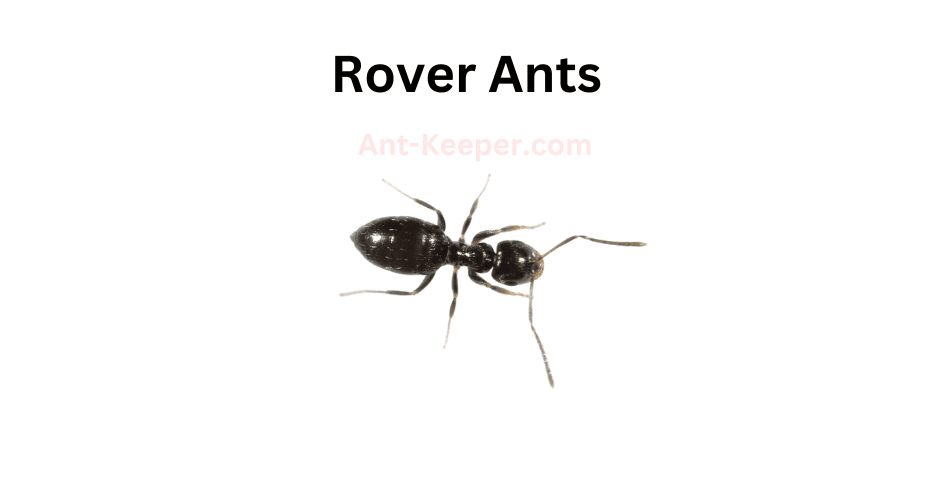
Rover ants, also known as Brachymyrmex spp., are a species of small, dark-colored ants that are commonly found in urban and suburban areas.
These ants are known for their ability to quickly move their nests from one location to another, hence their name "rover ants."
Rover ants are typically between 1.5 and 2.5 millimeters in length and have a dark brown or black coloration.
They have a slender body with a distinct waist and long, thin legs.
These ants are known for their aggressive behavior towards other ant species and will often invade and take over their nests.
Rover ants are omnivorous and will feed on a variety of food sources, including insects, sweets, and plant material.
They are also known to be attracted to human food and can become a nuisance in homes and other buildings.
One unique characteristic of rover ants is their ability to form "supercolonies." These supercolonies can consist of multiple nests and can span large areas.
This behavior allows rover ants to quickly adapt to changing environments and find new food sources.
Overall, rover ants are a common and adaptable species that can be found in many different environments.
While they can be a nuisance in homes and other buildings, they play an important role in the ecosystem as scavengers and predators of other insects.
3) Carpenter And Sugar Ants, Camponotus

Carpenter ants and sugar ants are two common species of ants found in many regions of the world.
Carpenter ants are known for their ability to excavate wood and create nests within it.
They are typically larger in size than sugar ants and have a black or dark brown coloration.
Carpenter ants are also known for their strong mandibles, which they use to chew through wood and other materials.
Sugar ants, on the other hand, are smaller in size and have a yellow or brown coloration.
They are named for their preference for sugary foods and are often found in kitchens and other areas where food is stored.
Sugar ants are also known for their ability to form large colonies, with thousands of individual ants working together to gather food and care for their young.
Both carpenter ants and sugar ants play important roles in their ecosystems.
Carpenter ants help to break down dead wood and other plant material, which helps to recycle nutrients back into the soil.
Sugar ants help to disperse seeds and pollinate plants, which helps to maintain healthy ecosystems.
However, both species can also be pests when they invade human homes and buildings.
Carpenter ants can cause damage to wooden structures, while sugar ants can contaminate food and be a nuisance to homeowners.
It is important to take steps to prevent ant infestations and to control them if they do occur, in order to protect both human health and the health of the environment.
4) Acrobat Ants, Crematogaster

Acrobat ants, also known as Crematogaster spp., are a genus of ants that are found in various parts of the world.
These ants are known for their unique ability to contort their bodies and move in acrobatic ways, hence their name.
Acrobat ants are relatively small, with workers measuring between 2-5mm in length.
They are typically brown or black in color, with a slender body and long legs.
These ants are known for their aggressive behavior and will readily defend their nests against intruders.
One of the most interesting features of acrobat ants is their ability to use their mandibles to grip onto surfaces and contort their bodies in unusual ways.
This allows them to move along narrow branches, twigs, and other surfaces that would be difficult for other ants to navigate.
They are also able to use this ability to escape from predators, such as birds and other insects.
Acrobat ants are omnivorous, meaning that they will eat both plant and animal matter.
They are known to feed on insects, nectar, and honeydew, as well as fruits and seeds.
These ants are also known to tend to aphids, protecting them from predators in exchange for the sweet honeydew that the aphids produce.
In terms of their social structure, acrobat ants are typically organized into colonies that are led by a queen.
The queen is responsible for laying eggs, while the workers are responsible for foraging, caring for the young, and defending the nest.
Overall, acrobat ants are fascinating creatures that have adapted unique abilities to survive in their environments.
Their acrobatic abilities and aggressive behavior make them a formidable force in the insect world.
5) Dolly Ants, Dolichoderus
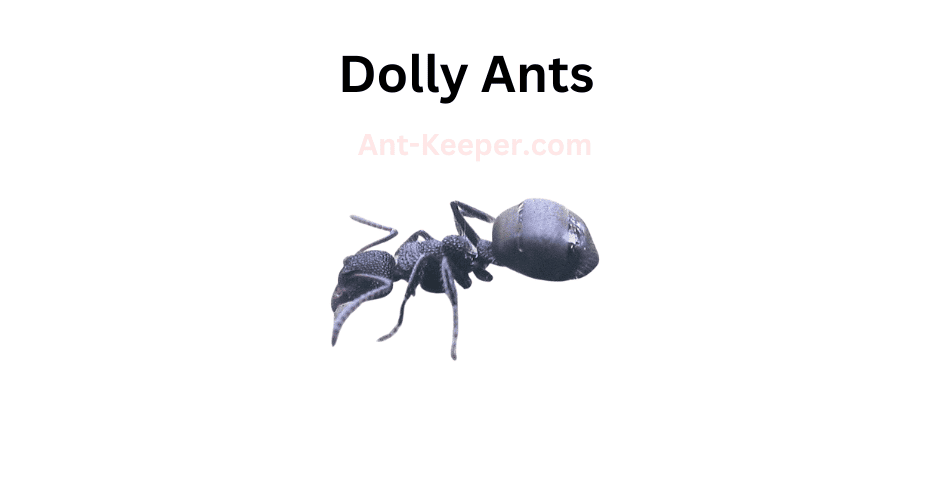
Dolly Ants, also known as Dolichoderus spp., are a species of ant that belong to the family Formicidae.
These ants are known for their distinctive elongated heads and bodies, which give them a unique appearance compared to other ant species.
Dolly Ants are typically found in forested areas, where they build their nests in soil or under rocks.
They are known to be highly social insects, living in large colonies that can contain thousands of individuals.
Within these colonies, there is a strict division of labor, with different ants taking on specific roles such as foraging, caring for the young, and defending the colony.
One interesting aspect of Dolly Ant behavior is their use of chemical communication.
These ants use pheromones to communicate with each other, leaving trails of scent that other ants can follow to locate food sources or to find their way back to the nest.
They also use pheromones to signal danger, which can trigger a coordinated response from the colony to defend against predators.
Dolly Ants are omnivorous, feeding on a variety of foods including insects, nectar, and plant sap.
They are also known to have a mutualistic relationship with certain plant species, where they protect the plants from herbivores in exchange for a source of food.
Overall, Dolly Ants are a fascinating species of ant with unique physical and behavioral characteristics.
Their social structure and use of chemical communication make them an important subject of study for researchers interested in understanding the behavior of social insects.
6) Forelius
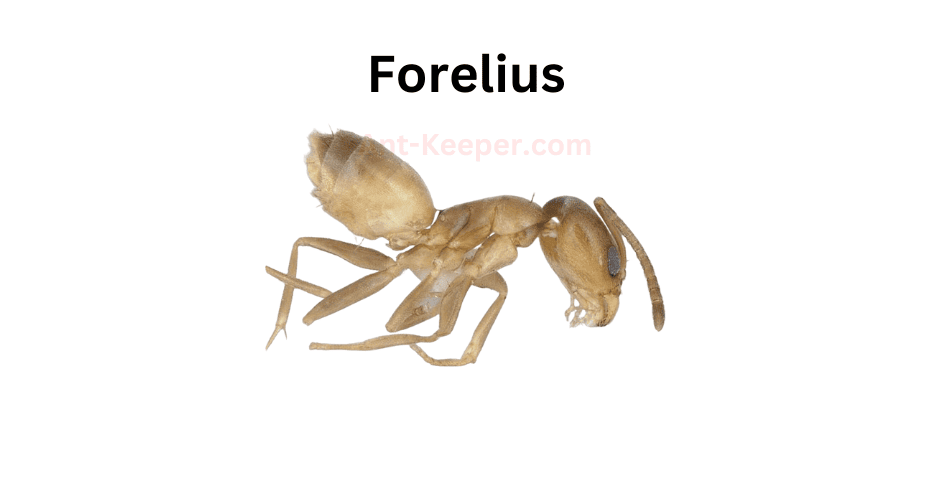
Forelius is a genus of ants that belongs to the family Formicidae.
These ants are commonly found in arid and semi-arid regions, and they are known for their small size and aggressive behavior.
Forelius ants are typically yellow or brown in color, and they have a slender body with long legs and antennae.
Forelius ants are social insects that live in colonies.
The colonies are usually small, with only a few hundred individuals, and they are often found nesting in the soil or under rocks.
The ants are omnivorous, and they feed on a variety of foods, including insects, nectar, and seeds.
One of the most interesting aspects of Forelius ants is their aggressive behavior.
These ants are known for their ability to defend their territory and resources against other ant species.
They will attack and kill other ants that come too close to their nest or food sources.
This behavior is thought to be an adaptation to the harsh and competitive environment in which they live.
Forelius ants also have a unique method of communication.
They use chemical signals, or pheromones, to communicate with each other.
These signals are used to mark trails, identify nestmates, and signal danger.
The ants also use tactile communication, such as touching antennae, to exchange information.
Overall, Forelius ants are fascinating insects that have adapted to survive in harsh and competitive environments.
Their aggressive behavior and unique communication methods make them a fascinating subject for study.
7) Wood Ants, Formica

Wood ants, also known as carpenter ants, are a species of ant that belong to the genus Camponotus.
They are widely distributed throughout the world and are commonly found in forests and woodlands.
These ants are known for their ability to excavate wood and create nests inside trees, logs, and other wooden structures.
Wood ants are typically large in size, with workers ranging from 6 to 13 millimeters in length.
They are usually black or brown in color and have a smooth, shiny exoskeleton.
These ants have strong mandibles that they use to chew through wood and defend their nests.
Wood ants are social insects that live in colonies consisting of a queen, workers, and soldiers.
The queen is responsible for laying eggs, while the workers and soldiers are responsible for maintaining the nest and protecting it from predators.
These ants communicate with each other using chemical signals called pheromones.
Wood ants are omnivores and feed on a variety of food sources, including insects, honeydew, and plant sap.
They are also known to scavenge for food and will sometimes raid the nests of other ant species.
Despite their ability to excavate wood, wood ants are not considered pests.
In fact, they play an important role in forest ecosystems by helping to decompose dead wood and recycle nutrients.
They also serve as a food source for many other animals, including birds, mammals, and other insects.
Overall, wood ants are fascinating creatures that have adapted to live in a unique habitat.
Their ability to excavate wood and create nests inside trees is a testament to their ingenuity and resourcefulness.
8) Formicoxenus
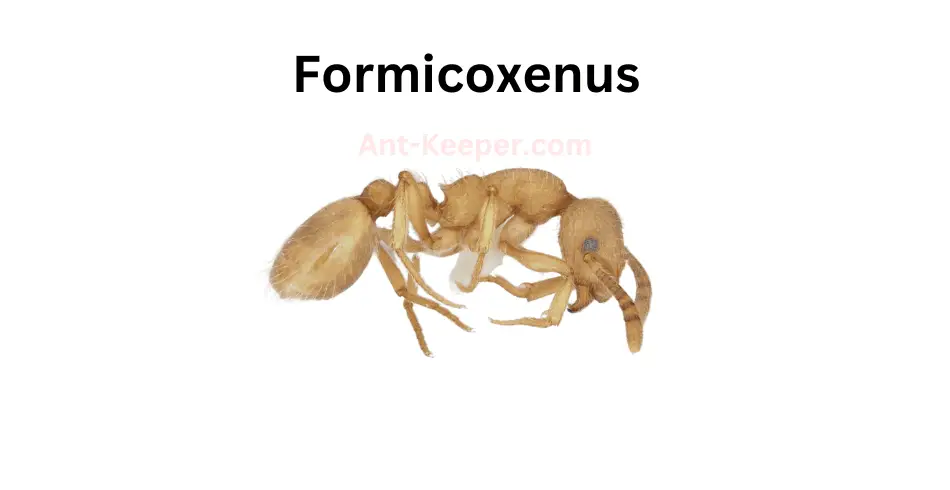
Formicoxenus is a genus of ants belonging to the subfamily Myrmicinae.
The ants in this genus are small in size, measuring between 1.5 to 3 millimeters in length.
They are known for their distinctive morphology, which includes a narrow waist and a large head with long mandibles.
Formicoxenus ants are typically found in forested areas, where they live in small colonies under rocks, logs, or in leaf litter.
They are known to be highly specialized, with each species having a specific host ant species that they parasitize.
The Formicoxenus ants are social parasites, meaning that they rely on their host ants for food and shelter.
The reproductive strategy of Formicoxenus ants is unique.
The queen ant will infiltrate the host colony and kill the resident queen.
She will then lay her eggs in the host colony, which will be raised by the host workers.
The Formicoxenus larvae will then feed on the host ant larvae and pupae, ensuring their survival.
Formicoxenus ants are important members of forest ecosystems, as they play a role in controlling the population of their host ants.
They are also important indicators of forest health, as their presence can indicate the presence of healthy forest ecosystems.
9) Harpagoxenus
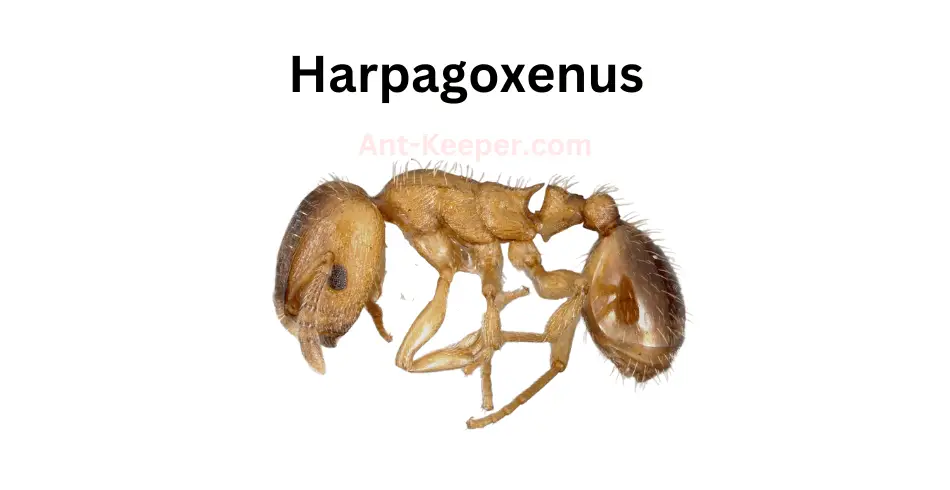
Harpagoxenus is a genus of ants belonging to the subfamily Myrmicinae.
The species Harpagoxenus can be identified by its small size, measuring only a few millimeters in length.
They have a dark brown to black coloration and a slender body shape.
Harpagoxenus ants are known for their unique social behavior.
They are considered to be social parasites, meaning they rely on other ant species to raise their young.
Harpagoxenus queens will invade the nests of other ant species and lay their eggs among the host colony's brood.
The Harpagoxenus larvae will then be fed and cared for by the host workers until they reach adulthood.
Once the Harpagoxenus workers emerge, they will begin to take over the host colony.
They will kill the host queen and force the remaining workers to care for their young.
The Harpagoxenus workers will also take over the food resources of the host colony, ensuring their own survival.
Harpagoxenus ants are found in a variety of habitats, including forests, grasslands, and deserts.
They are most commonly found in areas with high ant diversity, as they rely on other ant species for their survival.
Overall, Harpagoxenus ants are fascinating creatures with unique social behavior.
Their reliance on other ant species for survival makes them an important part of the ecosystem and highlights the complex interactions between different species in nature.
10) Moisture Ants, Lasius
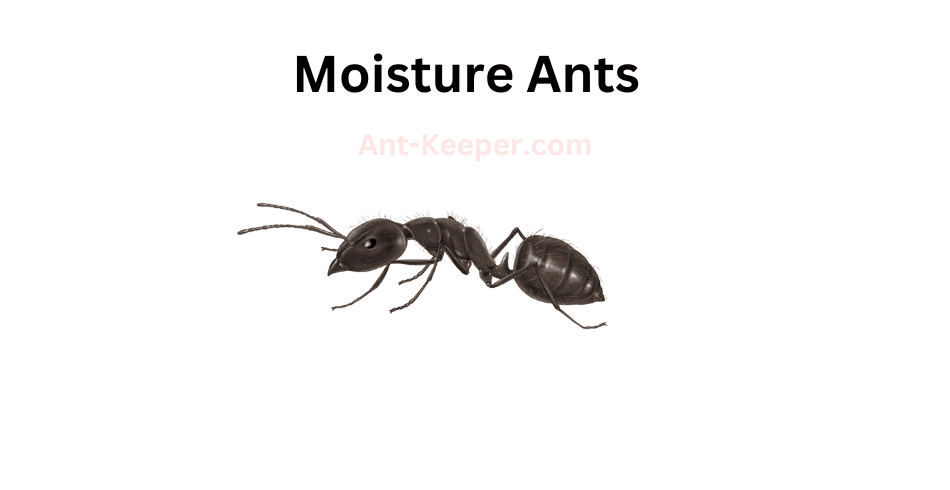
Moisture ants are a type of ant that is commonly found in damp environments.
They are known for their ability to thrive in areas with high levels of moisture, such as in rotting wood or in soil that is constantly moist.
These ants are typically small in size, measuring only a few millimeters in length, and are usually yellow or brown in color.
Moisture ants are social insects that live in colonies, with each colony consisting of a queen, workers, and soldiers.
The queen is responsible for laying eggs, while the workers and soldiers are responsible for maintaining the colony and protecting it from predators.
One of the unique characteristics of moisture ants is their ability to create satellite colonies.
These colonies are established in nearby locations and are connected to the main colony by a network of tunnels.
This allows the ants to expand their territory and increase their chances of survival.
Moisture ants are also known for their ability to control the moisture levels in their environment.
They do this by building intricate nests that are designed to regulate the humidity levels inside.
This is important for the survival of the colony, as too much moisture can lead to the growth of harmful fungi and bacteria.
Overall, moisture ants are fascinating creatures that have adapted to thrive in environments that would be inhospitable to many other species.
Their ability to control moisture levels and create satellite colonies makes them a formidable force in their ecosystem.
11) Leptothorax
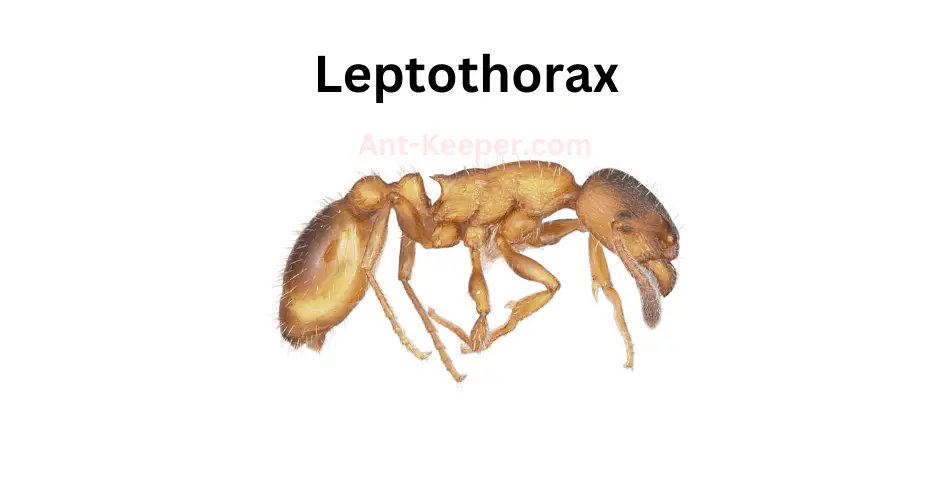
Leptothorax is a genus of ants that belongs to the family Formicidae.
These ants are small in size, measuring between 2 to 4 millimeters in length.
They are commonly found in forests, grasslands, and other natural habitats.
Leptothorax ants are known for their social behavior, as they live in colonies that can range from a few dozen to several hundred individuals.
These ants have a hierarchical social structure, with a queen ant at the top and worker ants at the bottom.
The queen ant is responsible for laying eggs, while the worker ants take care of the young, gather food, and defend the colony from predators.
One interesting feature of Leptothorax ants is their ability to form temporary colonies with other ant species.
This behavior is known as "temporary social parasitism," and it allows Leptothorax ants to benefit from the resources of other ant colonies without having to invest in their own colony infrastructure.
Leptothorax ants are also known for their ability to navigate through complex environments.
They use a combination of visual cues and chemical signals to find their way back to the colony after foraging for food.
Overall, Leptothorax ants are fascinating creatures that play an important role in their ecosystems.
Their social behavior and navigational abilities make them a subject of interest for scientists studying animal behavior and ecology.
12) Trailing Pharaoh And Timid Ants, Monomorium

The Trailing Pharaoh ant, also known as the Monomorium pharaonis, is a small, reddish-brown ant species that is commonly found in urban areas.
These ants are known for their ability to form large colonies, which can consist of thousands of individuals.
One interesting behavior of the Trailing Pharaoh ant is their tendency to trail behind other ants.
This behavior is thought to be a form of communication, as the trailing ants are able to follow the scent trail left by the leading ants.
This behavior is also used to locate food sources, as the trailing ants are able to follow the trail to the source of the food.
In contrast to the bold behavior of the Trailing Pharaoh ant, the Timid ant, also known as the Temnothorax species, is a much more cautious species.
These ants are small and brown, and are often found in wooded areas.
They are known for their timid behavior, and will often retreat into their nests when threatened.
Despite their timid nature, the Timid ant is still able to form large colonies.
They are also known for their ability to adapt to changing environments, and can be found in a variety of habitats, including forests, meadows, and even urban areas.
Overall, both the Trailing Pharaoh ant and the Timid ant are fascinating species that demonstrate unique behaviors and adaptations.
By studying these ants, scientists can gain a better understanding of the complex social behaviors and ecological roles of ants in their respective environments.
13) Mite-Eating Ants, Myrmecina
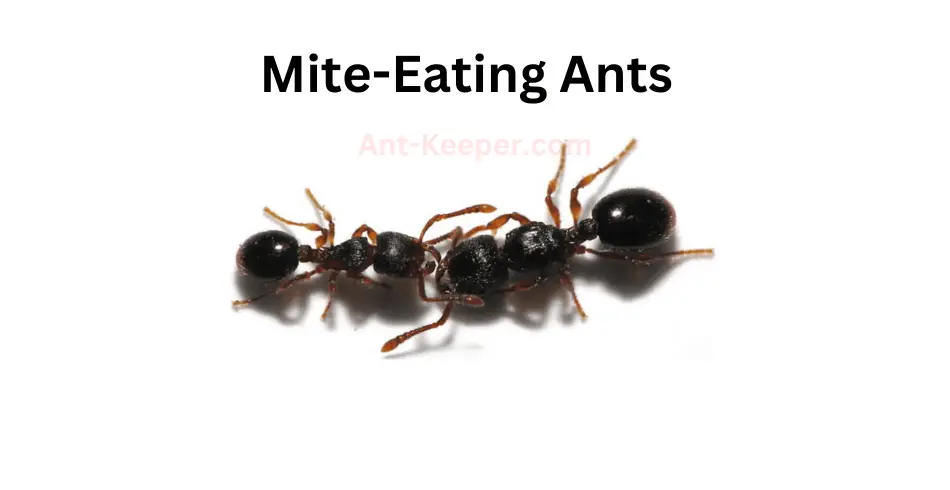
The Mite-Eating Ant, also known as the Pheidole megacephala, is a species of ant that is commonly found in tropical and subtropical regions around the world.
These ants are known for their unique feeding habits, as they primarily feed on mites and other small arthropods.
The Mite-Eating Ant is a relatively small ant, with workers measuring between 2-3mm in length.
They have a distinctive head shape, with a large and elongated head that is almost as wide as their thorax.
Their bodies are typically a reddish-brown color, with darker legs and antennae.
These ants are highly social, living in large colonies that can contain thousands of individuals.
The colonies are typically divided into two groups: workers and reproductive individuals.
The workers are responsible for foraging for food, caring for the young, and defending the colony, while the reproductive individuals are responsible for producing offspring.
One of the most interesting aspects of the Mite-Eating Ant is their feeding habits.
These ants are specialized predators, feeding almost exclusively on mites and other small arthropods.
They use their large mandibles to capture and kill their prey, and then carry it back to the colony to be consumed.
In addition to their unique feeding habits, the Mite-Eating Ant is also known for its ability to adapt to a wide range of environments.
They are able to thrive in both natural and urban environments, and can be found in a variety of habitats, including forests, grasslands, and even in homes and buildings.
Overall, the Mite-Eating Ant is a fascinating species of ant that has adapted to a unique niche in the ecosystem.
Their specialized feeding habits and ability to thrive in a variety of environments make them an important species to study and understand.
14) Furrowed Ants, Myrmica

Furrowed ants, also known as Pheidole ruginoda, are a species of ant that belong to the family Formicidae.
These ants are commonly found in various habitats such as forests, grasslands, and deserts.
They are known for their distinctive appearance, with a furrowed head and thorax, and a smooth and shiny abdomen.
Furrowed ants are social insects that live in colonies, which can range in size from a few hundred to several thousand individuals.
The colony is typically headed by a queen ant, whose primary role is to lay eggs.
The workers, which are sterile females, are responsible for foraging, nest maintenance, and caring for the young.
These ants are omnivorous, meaning they feed on both plant and animal matter.
Their diet consists of seeds, insects, and other small invertebrates.
They are also known to tend to aphids, which produce a sugary substance that the ants feed on.
Furrowed ants are known for their aggressive behavior, and will defend their colony fiercely against intruders.
They have been observed engaging in territorial battles with other ant species, and will even attack larger insects such as grasshoppers and beetles.
Overall, furrowed ants are an important part of many ecosystems, playing a crucial role in seed dispersal and soil aeration.
Their unique appearance and behavior make them a fascinating subject for study and observation.
15) Amazon Ants, Polyergus
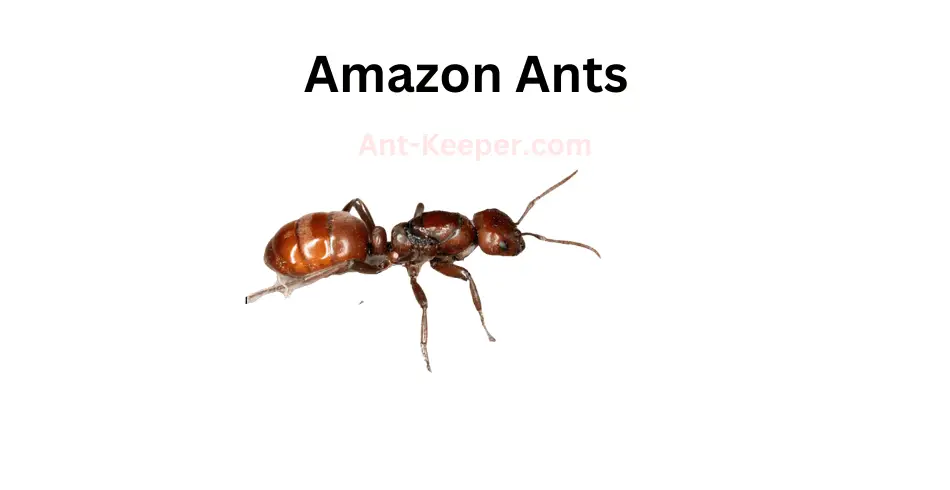
The Amazon Ant, also known as the Polyergus breviceps, is a species of ant that belongs to the Formicidae family.
These ants are known for their unique behavior of raiding other ant colonies and stealing their brood to raise as their own.
The Amazon Ants are typically black or dark brown in color and have a slender body with long legs.
They are relatively small in size, with workers measuring around 4-5 mm in length.
The queen ants are slightly larger, measuring around 7-8 mm in length.
These ants are social insects and live in large colonies that can consist of thousands of individuals.
The colonies are usually divided into different castes, including workers, soldiers, and reproductive ants.
The workers are responsible for foraging, caring for the brood, and maintaining the nest, while the soldiers defend the colony from predators.
One of the most interesting aspects of the Amazon Ants is their unique behavior of raiding other ant colonies.
They do this by sending out a group of specialized workers, known as raiders, to infiltrate the target colony.
The raiders then steal the brood of the target colony and bring it back to their own nest.
Once the stolen brood hatches, the Amazon Ants use it to increase their own workforce.
The Amazon Ants are also known for their symbiotic relationship with a species of butterfly known as the Maculinea rebeli.
The butterfly larvae feed on the brood of the Amazon Ants, but in return, they secrete a substance that makes the ants more aggressive and better at raiding other colonies.
Overall, the Amazon Ants are fascinating creatures with unique behaviors and adaptations that allow them to thrive in their environment.
16) Porthole Ants, Ponera
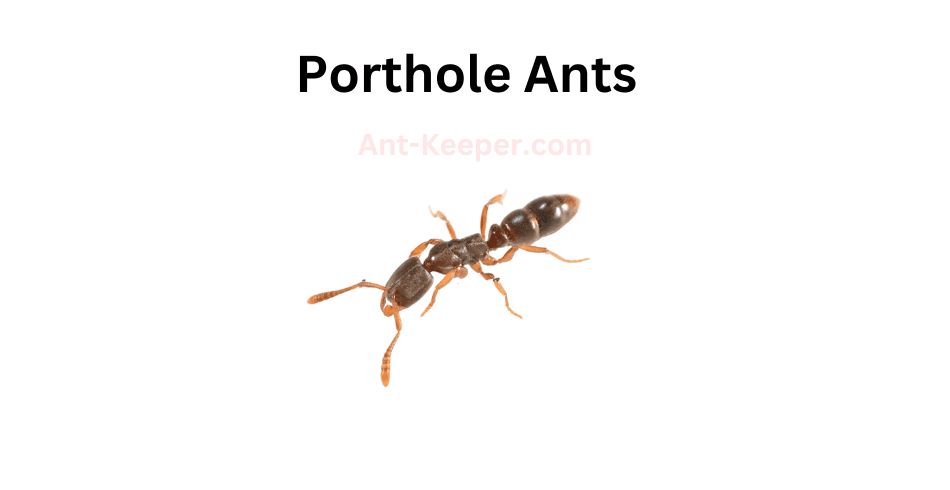
Porthole ants, also known as Temnothorax spp., are a genus of small ants that are commonly found in forested areas.
These ants are known for their unique nesting behavior, as they create their nests in small cavities or "portholes" in trees, rocks, or other natural structures.
Porthole ants are typically less than 5mm in length and have a dark brown or black coloration.
They are social insects and live in colonies that can range from a few dozen to several hundred individuals.
The colonies are typically led by a single queen, who is responsible for laying eggs and maintaining the colony's reproductive population.
One of the most interesting aspects of porthole ants is their nesting behavior.
Unlike many other ant species, porthole ants do not create large underground nests.
Instead, they seek out small cavities in natural structures and use them as their nesting sites.
These cavities can be as small as a few millimeters in diameter and are often located high up in trees or on rocky outcroppings.
Porthole ants are also known for their ability to adapt to changing environmental conditions.
They are able to quickly relocate their nests if their current nesting site becomes unsuitable due to factors such as flooding or predation.
This adaptability allows them to thrive in a variety of habitats, from temperate forests to arid deserts.
Overall, porthole ants are a fascinating and unique species of ant that have adapted to their environment in a variety of ways.
Their nesting behavior and adaptability make them an important species to study for understanding the ecology of forested areas.
17) Winter Ants, Prenolepis

Winter ants, also known as Formica exsectoides, are a species of ant that are commonly found in temperate regions.
These ants are known for their ability to survive harsh winter conditions, which is where they get their name from.
Winter ants are typically black or dark brown in color and can range in size from 4 to 8 millimeters in length.
They are social insects and live in large colonies that can contain thousands of individuals.
These colonies are typically located underground, where the ants construct elaborate tunnels and chambers.
One of the most interesting things about winter ants is their ability to survive the cold winter months.
Unlike many other ant species, winter ants do not hibernate during the winter.
Instead, they have developed a number of adaptations that allow them to survive in the cold.
One of these adaptations is the ability to regulate their body temperature.
Winter ants are able to generate heat by shivering their muscles, which allows them to maintain a temperature of around 25 degrees Celsius even when the outside temperature drops below freezing.
Winter ants also have a unique diet that helps them survive the winter.
They feed on the honeydew produced by aphids, which is a sugary substance that provides them with the energy they need to survive.
Overall, winter ants are a fascinating species of ant that have adapted to survive in some of the harshest conditions on earth.
Their ability to regulate their body temperature and feed on a unique diet make them a truly remarkable species.
18) Hairy Curltail Ants, Proceratium
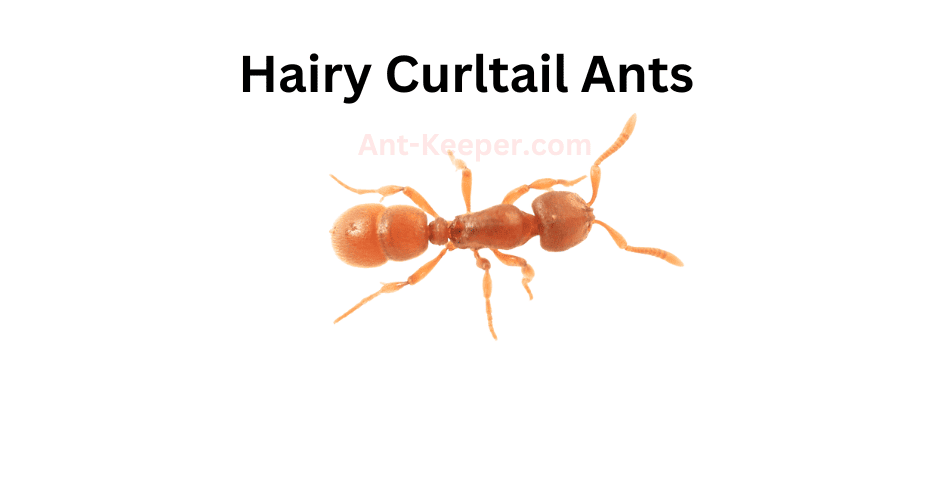
The Hairy Curltail Ant (Camponotus pilicornis) is a species of ant belonging to the genus Camponotus.
These ants are known for their distinctive hairy appearance, which covers their entire body.
The hairs on their body are long and curly, giving them a unique and striking appearance.
Hairy Curltail Ants are typically found in forested areas, where they build their nests in dead wood or under rocks.
They are known to be highly territorial and will aggressively defend their nests against intruders.
These ants are also known to be omnivorous, feeding on a variety of food sources including insects, nectar, and honeydew.
The Hairy Curltail Ant is a relatively large ant species, with workers measuring between 6-12mm in length.
The queen ant is even larger, measuring up to 15mm in length.
These ants are also known for their strong mandibles, which they use to defend their nests and capture prey.
One interesting aspect of the Hairy Curltail Ant is their ability to communicate with each other through the use of pheromones.
These chemical signals are used to mark trails, identify nestmates, and coordinate foraging activities.
Overall, the Hairy Curltail Ant is a fascinating species of ant with a unique appearance and interesting behaviors.
Their presence in forested areas can have important ecological implications, as they play a role in the ecosystem as both predators and scavengers.
19) Protomognathus
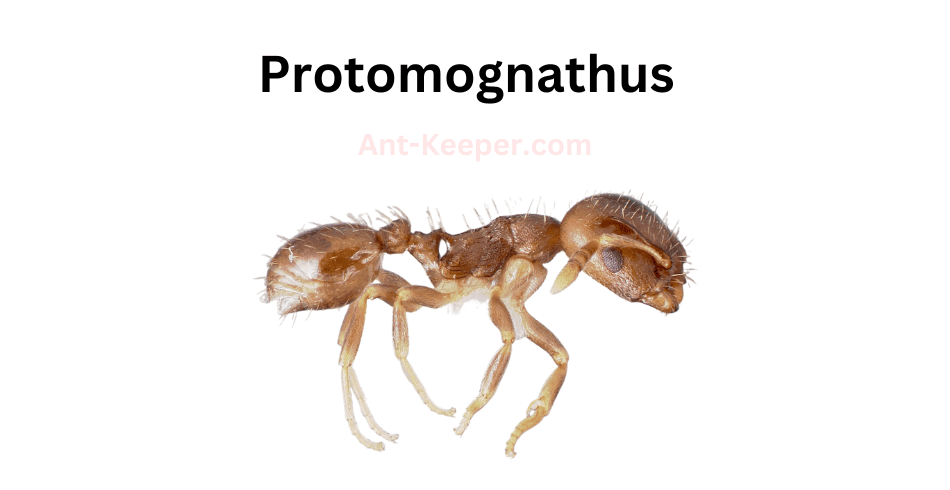
Protomognathus is a genus of ants belonging to the family Formicidae.
The ants in this genus are known for their aggressive behavior and are commonly found in tropical and subtropical regions.
The species Protomognathus americanus is one of the most well-known species in this genus.
Protomognathus ants are relatively small in size, with workers measuring between 2 and 5 millimeters in length.
They are typically reddish-brown in color and have a distinctive mandible shape that is used for capturing prey and defending their colony.
These ants are known for their predatory behavior and are often found hunting other insects and arthropods.
They are also known to scavenge for food and will consume a variety of organic matter, including dead insects and plant material.
Protomognathus ants are social insects and live in colonies that can range in size from a few dozen individuals to several thousand.
The colony is typically led by a queen ant, who is responsible for laying eggs and maintaining the overall health of the colony.
Overall, Protomognathus ants are fascinating creatures that play an important role in their ecosystems.
While they may be aggressive and predatory, they are also an important food source for many other animals and help to control populations of other insects and arthropods.
20) Fire Ants, Solenopsis
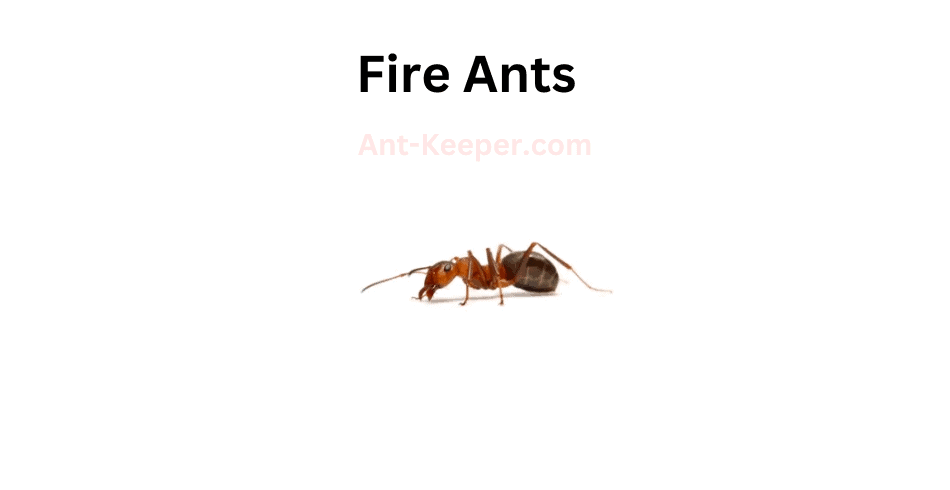
Fire ants are a type of ant that belongs to the Solenopsis genus.
They are known for their reddish-brown color and their aggressive behavior.
Fire ants are social insects that live in colonies, which can range in size from a few hundred to several thousand individuals.
Fire ants are omnivorous and feed on a variety of foods, including insects, seeds, and other small animals.
They are also known to scavenge for food and will often invade other ant colonies to steal their resources.
One of the most distinctive features of fire ants is their ability to sting.
They have a stinger located at the end of their abdomen, which they use to inject venom into their prey or enemies.
Fire ant stings can be painful and can cause an allergic reaction in some people.
Fire ants are also known for their ability to build large mounds, which can reach heights of up to 18 inches.
These mounds are made of soil and are used as a nesting site for the colony.
Fire ants are considered to be an invasive species in many parts of the world, as they can cause damage to crops and wildlife.
They are also a nuisance to humans, as their stings can be painful and their mounds can be unsightly.
Overall, fire ants are fascinating insects that have adapted to thrive in a variety of environments.
While they can be a nuisance, they are an important part of the ecosystem and play a vital role in controlling insect populations.
21) Leaf-Litter Ants, Stenamma

Leaf-litter ants are a group of ants that are commonly found in forested areas around the world.
They are known for their ability to live and forage in the leaf litter layer of the forest floor, where they play an important role in nutrient cycling and soil health.
Leaf-litter ants are typically small in size, ranging from 1-5mm in length.
They are often reddish-brown or black in color, and have a slender, elongated body shape.
These ants are social insects, living in colonies that can range in size from a few dozen to several thousand individuals.
One of the key characteristics of leaf-litter ants is their ability to forage for food in the leaf litter layer.
They are known to feed on a variety of organic matter, including dead insects, fungi, and plant material.
Leaf-litter ants are also important decomposers, breaking down organic matter and returning nutrients to the soil.
In addition to their role in nutrient cycling, leaf-litter ants also play an important role in the ecosystem as prey for other animals.
They are a food source for a variety of predators, including birds, reptiles, and other insects.
Overall, leaf-litter ants are an important and fascinating group of insects that play a critical role in maintaining the health and functioning of forest ecosystems around the world.
22) Vampire Ants, Stigmatomma
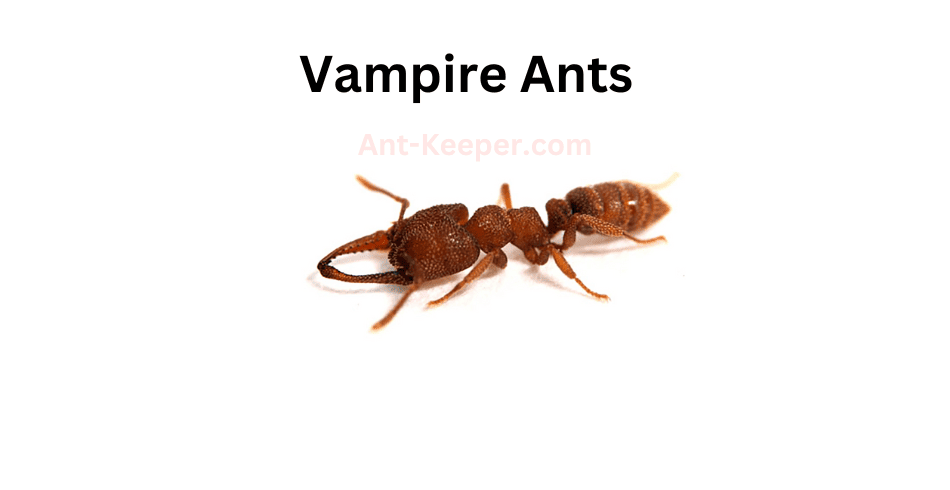
Vampire ants, also known as blood-sucking ants, are a species of ants that feed on the blood of other insects.
These ants are known for their unique feeding behavior, which involves biting into the exoskeleton of their prey and then sucking out their blood.
Vampire ants are typically found in tropical and subtropical regions, where they live in colonies of up to several thousand individuals.
They are known for their aggressive behavior and will attack other insects, including larger prey such as grasshoppers and caterpillars.
One of the most interesting aspects of vampire ants is their ability to adapt to their environment.
In some cases, these ants have been known to feed on the blood of their own colony members when other sources of food are scarce.
Vampire ants are also known for their unique physical characteristics.
They have long, curved mandibles that are used to bite into the exoskeleton of their prey.
They also have specialized mouthparts that allow them to suck out the blood of their victims.
Despite their aggressive behavior and blood-sucking tendencies, vampire ants play an important role in their ecosystem.
They help to control the populations of other insects and contribute to the overall balance of their environment.
Overall, vampire ants are a fascinating species of ants that have adapted to their environment in unique and interesting ways.
Their behavior and physical characteristics make them a subject of interest for scientists and nature enthusiasts alike.
23) Tapinoma

Tapinoma is a genus of ants that belongs to the family Formicidae.
The species Tapinoma is a small ant that measures about 2-3 mm in length.
They are commonly found in urban and suburban areas, and are known to invade homes and buildings in search of food and shelter.
Tapinoma ants are light brown in color and have a slender body with long legs.
They have a distinctively shaped head that is wider than their thorax, and they possess a pair of antennae that are bent at a right angle.
These ants are known for their ability to form large colonies, which can consist of thousands of individuals.
Tapinoma ants are omnivorous and feed on a variety of food sources, including insects, nectar, and honeydew.
They are also known to scavenge for food in garbage cans and other waste areas.
These ants are attracted to sweet and sugary substances, and will often invade kitchens and pantries in search of food.
Tapinoma ants are not known to be aggressive towards humans, but they can become a nuisance when they invade homes and buildings.
They are known to build their nests in wall voids, under floors, and in other hidden areas.
If left unchecked, these ants can cause damage to structures and can contaminate food sources.
Overall, Tapinoma ants are a common pest in many parts of the world.
While they are not harmful to humans, they can be a nuisance when they invade homes and buildings.
Proper pest control measures can help to prevent infestations and keep these ants at bay.
24) Slave-Making Ants, Temnothorax
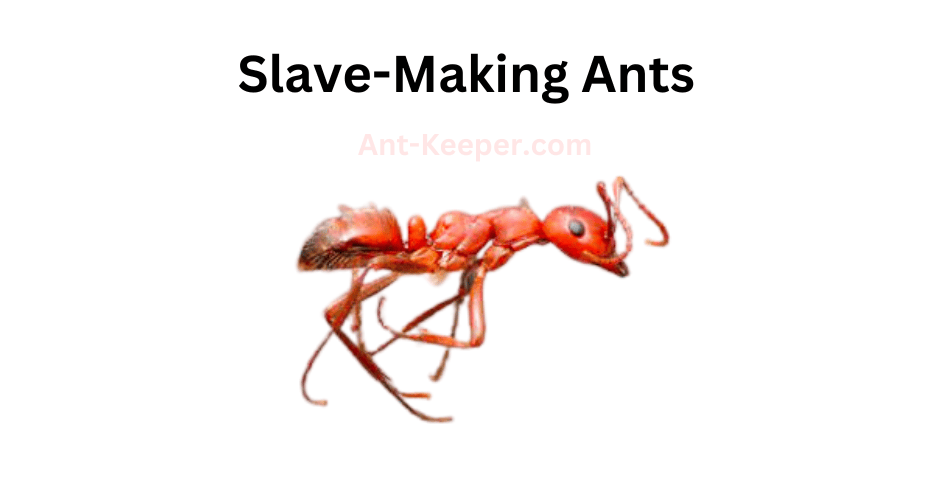
The Slave-Making Ants, also known as Dulosis ants, are a group of social insects that engage in a unique behavior of raiding and enslaving other ant colonies.
These ants belong to the subfamily Formicinae and are found in various parts of the world.
The Slave-Making Ants have a complex social structure, with a queen, workers, and soldiers.
The queen is responsible for laying eggs, while the workers and soldiers carry out various tasks such as foraging, nest building, and defense.
However, unlike other ant species, the Slave-Making Ants do not rely solely on their own colony for survival.
Instead, these ants raid nearby colonies of other ant species, using their superior strength and numbers to overpower the defenders.
The Slave-Making Ants then carry off the pupae of the conquered colony back to their own nest.
Once the pupae hatch, they are raised by the Slave-Making Ants and forced to work as slaves for the colony.
The Slave-Making Ants have evolved a number of adaptations to facilitate their slave-raiding behavior.
For example, they have a highly developed sense of smell, which allows them to locate and target specific ant colonies.
They also have strong mandibles and powerful stingers, which they use to subdue their prey.
Despite their aggressive behavior, the Slave-Making Ants play an important role in their ecosystem.
By raiding other ant colonies, they help to control the population of competing ant species.
Additionally, the enslaved ants provide a source of food and labor for the Slave-Making Ants, allowing them to thrive in environments where resources are scarce.
Overall, the Slave-Making Ants are a fascinating and unique species of ant, with a complex social structure and a highly specialized behavior.
While their slave-raiding behavior may seem cruel, it is an important part of their survival strategy and has helped them to thrive in a variety of environments.
25) Funnel Ants, Aphaenogaster Picea

The Funnel Ants, also known as Aphaenogaster ants, are a species of ants that are commonly found in various habitats around the world.
These ants are known for their unique nesting behavior, where they construct funnel-shaped nests that are typically located in soil or leaf litter.
The Funnel Ants are relatively small in size, with workers measuring between 3-5mm in length.
They are typically reddish-brown in color and have a slender body shape.
These ants are known for their strong mandibles, which they use to collect and transport food back to their nests.
One of the most interesting aspects of the Funnel Ants is their nesting behavior.
These ants construct funnel-shaped nests that are typically located in soil or leaf litter.
The entrance to the nest is narrow and funnel-shaped, which helps to protect the colony from predators and other threats.
Inside the nest, the ants create a series of chambers and tunnels that are used for different purposes, such as storing food, caring for the brood, and housing the queen.
The Funnel Ants are omnivorous, meaning that they feed on both plant and animal matter.
They are known to collect a wide variety of food items, including seeds, insects, and other small invertebrates.
These ants are also known to tend to aphids, which they use for their honeydew secretion.
Overall, the Funnel Ants are a fascinating species of ants that are known for their unique nesting behavior and omnivorous diet.
They play an important role in their ecosystems, helping to control populations of other insects and contributing to nutrient cycling in the soil.
26) Winnow Ants, Aphaenogaster Rudis
The Winnow Ant, also known as the Acanthomyops interjectus, is a species of ant that belongs to the Formicidae family.
These ants are commonly found in grasslands and open areas, where they build their nests in the soil.
The Winnow Ant is known for its unique behavior of winnowing, which involves the sorting and removal of debris from their nests.
The Winnow Ant is a small ant, measuring around 3-4 mm in length.
They have a dark brown or black coloration, with a shiny and smooth exoskeleton.
The workers of this species are polymorphic, meaning they come in different sizes.
The larger workers are responsible for foraging and defending the nest, while the smaller workers take care of the brood and tend to the queen.
One of the most interesting behaviors of the Winnow Ant is their winnowing behavior.
This involves the removal of debris and unwanted materials from their nests, such as dead insects, soil particles, and other debris.
The ants use their mandibles to pick up the debris and carry it outside the nest, where it is deposited in a pile.
This behavior helps to keep the nest clean and free from unwanted materials.
The Winnow Ant is an omnivorous species, feeding on a variety of food sources.
They primarily feed on honeydew produced by aphids and other insects, as well as small insects and other arthropods.
They are also known to scavenge on dead insects and other organic matter.
The Winnow Ant is a social species, living in colonies that can range in size from a few hundred to several thousand individuals.
The colony is headed by a single queen, who is responsible for laying eggs and producing new workers.
The workers of the colony work together to maintain the nest, care for the brood, and defend the colony from predators and other threats.
Overall, the Winnow Ant is a fascinating species of ant that exhibits unique behaviors and adaptations.
Their winnowing behavior and social structure make them an important part of many ecosystems, and they play a vital role in maintaining the balance of these ecosystems.
27) Tennessee Collared Ants, Aphaenogaster Tennesseensis
The Tennessee Collared Ants (Formica angustipila) are a species of ants belonging to the Formicidae family.
These ants are known for their distinct collar-like marking on their thorax, which is a distinguishing feature of the species.
The workers of this species are typically small, measuring around 4-5 mm in length, and are reddish-brown in color.
Tennessee Collared Ants are known to be highly territorial and aggressive towards other ant species.
They are also known to be omnivorous, feeding on a variety of food sources including insects, nectar, and honeydew.
These ants are known to be active during the day and are often seen foraging for food in large groups.
The Tennessee Collared Ants are known to build large underground nests, which can house thousands of individuals.
These nests are typically located in soil or leaf litter and are often marked by a small mound of soil or debris.
The queen of this species is known to be the largest individual in the colony and is responsible for laying eggs and maintaining the colony.
Overall, the Tennessee Collared Ants are an important species in their ecosystem, playing a crucial role in soil health and nutrient cycling.
They are also an important food source for many other animals, including birds and mammals.
28) Treats Winnow Ants, Aphaenogaster Treatae
Treat's Winnow Ants, also known as Aphaenogaster treatae, are a species of ant that belong to the family Formicidae.
These ants are typically found in dry, sandy habitats such as deserts and grasslands.
They are known for their unique behavior of winnowing, which involves using their mandibles to sort through soil and debris in search of food.
Treat's Winnow Ants are small in size, measuring between 3-5mm in length.
They have a dark brown or black coloration and a slender body shape.
These ants are known for their strong mandibles, which they use to break down and carry food back to their nest.
One of the most interesting aspects of Treat's Winnow Ants is their winnowing behavior.
This involves using their mandibles to sort through soil and debris in search of food.
The ants will pick up small particles of soil and debris and sift through them, discarding any unwanted material and keeping the food items.
This behavior is thought to be an adaptation to their dry, sandy habitat, where food resources may be scarce.
Treat's Winnow Ants are also known for their social behavior.
They live in colonies that can range in size from a few dozen to several thousand individuals.
The colony is typically led by a queen ant, who is responsible for laying eggs and maintaining the colony.
The other ants in the colony are divided into different castes, including workers, soldiers, and reproductive ants.
Overall, Treat's Winnow Ants are a fascinating species of ant that have adapted to their unique habitat through their winnowing behavior.
Their social behavior and strong mandibles make them an important part of their ecosystem.
29) Hairless Rover Ants, Brachymyrmex Depilis
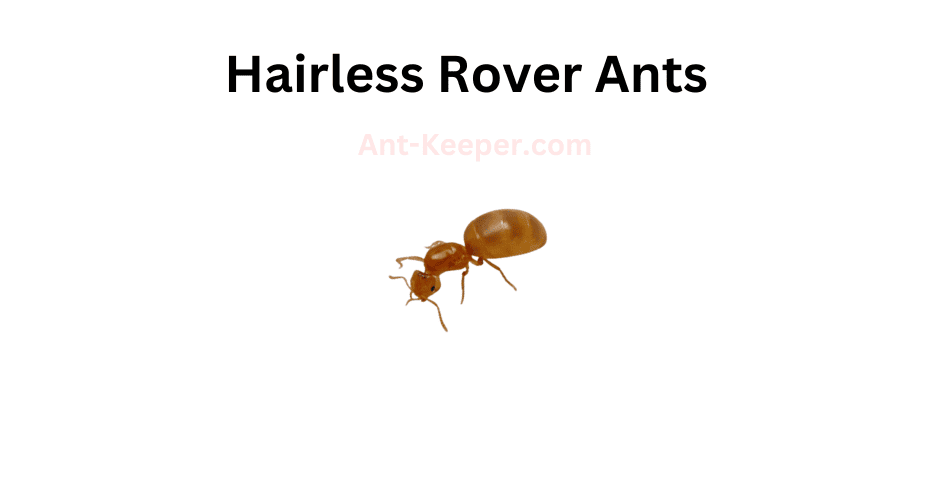
The Hairless Rover Ant, also known as Brachymyrmex patagonicus, is a small ant species that belongs to the family Formicidae.
These ants are typically found in urban and suburban areas, and are known for their hairless bodies and ability to quickly move from one location to another.
The Hairless Rover Ants are typically light brown in color and measure between 1.5 and 2.5 mm in length.
They have a distinct head and thorax, with a narrow waist and a bulbous abdomen.
Unlike other ant species, the Hairless Rover Ants lack the typical hairs that cover the body of most ants.
These ants are known for their ability to quickly move from one location to another, which is why they are often found in urban and suburban areas.
They are typically found in gardens, parks, and other areas where there is a lot of vegetation.
They are also known to invade homes and buildings, where they can be a nuisance to homeowners.
The Hairless Rover Ants are omnivorous, which means that they eat both plant and animal matter.
They are known to feed on insects, fruits, and other plant material.
They are also known to scavenge for food, and will often invade other ant colonies to steal their food.
The Hairless Rover Ants are social insects, and live in large colonies that can contain thousands of individuals.
They are known for their ability to quickly adapt to new environments, which is why they are able to thrive in urban and suburban areas.
Overall, the Hairless Rover Ants are an interesting and unique species of ant that are well adapted to living in urban and suburban environments.
While they can be a nuisance to homeowners, they play an important role in the ecosystem by helping to control insect populations and by serving as a food source for other animals.
30) American Carpenter Ants, Camponotus Americanus
The American Carpenter Ant (Camponotus spp.) is a species of ant that belongs to the family Formicidae.
These ants are known for their large size, with workers ranging from 6 to 13 mm in length.
They are typically black or dark brown in color, with a smooth and shiny exoskeleton.
As their name suggests, American Carpenter Ants are known for their ability to excavate wood.
They do not eat wood, but instead use it to create their nests.
These nests can be found in a variety of locations, including trees, stumps, and buildings.
The ants will often create tunnels and galleries within the wood, which can weaken the structure and cause damage over time.
American Carpenter Ants are omnivorous, meaning they will eat both plant and animal matter.
They are known to feed on insects, honeydew, and nectar, as well as fruits and vegetables.
They are also attracted to sweet substances, such as sugar and syrup.
The colony of American Carpenter Ants is typically composed of a queen, workers, and soldiers.
The queen is responsible for laying eggs, while the workers and soldiers are responsible for maintaining the nest and protecting it from predators.
The colony can range in size from a few hundred to several thousand individuals.
In terms of behavior, American Carpenter Ants are known for their aggression.
They will defend their nest fiercely, and can deliver a painful bite if provoked.
However, they are not typically aggressive towards humans unless they feel threatened.
Overall, American Carpenter Ants are an important species in their ecosystem.
While they can cause damage to buildings and other structures, they also play a role in controlling insect populations and recycling organic matter.
31) Hercules Ants, Camponotus Herculeanus
The Hercules ant, also known as Dinoponera gigantea, is a species of ant that belongs to the family of Ponerinae.
These ants are known for their large size, with the workers measuring up to 3.5 cm in length, making them one of the largest ant species in the world.
Hercules ants are typically found in tropical rainforests, where they live in underground nests.
These nests can be quite extensive, with multiple chambers and tunnels that can extend several meters underground.
The ants are known for their aggressive behavior and will fiercely defend their nests against any intruders.
One of the most interesting features of the Hercules ant is their powerful mandibles.
These mandibles are so strong that they can easily crush the exoskeletons of other insects, making them formidable predators.
The ants are also known to hunt larger prey, such as spiders and scorpions.
Despite their aggressive behavior, Hercules ants are also known for their social behavior.
They live in colonies that can number in the hundreds, with a strict hierarchy that determines the roles of each individual ant.
The queen ant is responsible for laying eggs, while the workers are responsible for foraging, caring for the young, and defending the nest.
Overall, the Hercules ant is a fascinating species that has captured the attention of scientists and nature enthusiasts alike.
Their impressive size and strength make them a formidable predator, while their complex social behavior adds to their intrigue.
32) Carpenter Ants, Camponotus Pennsylvanicus
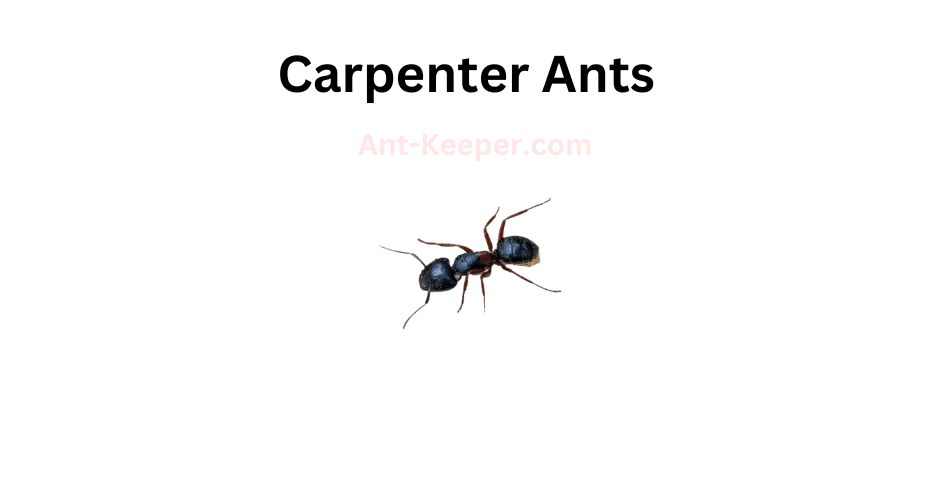
Carpenter ants are a species of ant that belong to the genus Camponotus.
They are known for their ability to excavate wood and create nests within it, which is why they are commonly referred to as "carpenter" ants.
These ants are typically black or red in color and can range in size from 6 to 12 millimeters in length.
Carpenter ants are social insects that live in colonies, which can range in size from a few hundred to several thousand individuals.
The colony is typically led by a queen ant, who is responsible for laying eggs and producing new members of the colony.
The workers, which make up the majority of the colony, are responsible for foraging for food, caring for the young, and maintaining the nest.
One of the most interesting aspects of carpenter ants is their ability to excavate wood.
Unlike termites, which eat wood, carpenter ants simply remove it to create their nests.
They do this by using their powerful mandibles to chew through the wood, creating tunnels and galleries that can extend several feet in length.
These tunnels are then used to house the colony and provide protection from predators and the elements.
Carpenter ants are also known for their role in the ecosystem.
They are important decomposers, breaking down dead wood and other organic matter and returning nutrients to the soil.
They also serve as a food source for other animals, including birds, reptiles, and mammals.
Despite their important ecological role, carpenter ants can also be a nuisance to humans.
They can cause damage to wooden structures, including homes and buildings, and can be difficult to control once they have established a nest.
However, with proper pest management techniques, it is possible to control carpenter ant populations and prevent damage to structures.
33) Black Carpenter Ants, Camponotus Pennsylvanicus
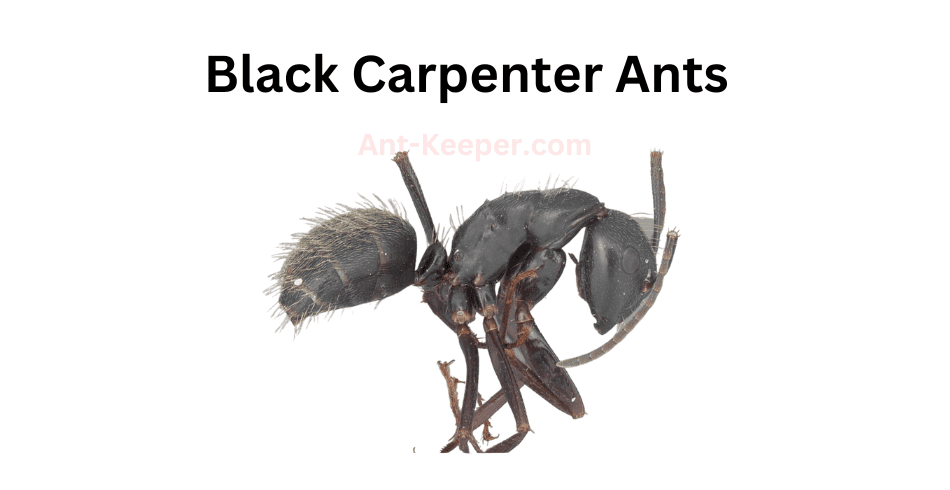
The Black Carpenter Ant (Camponotus pennsylvanicus) is a species of ant belonging to the family Formicidae.
These ants are commonly found in forests, woodlands, and urban areas across their range.
They are known for their large size, with workers measuring up to 1.5 cm in length.
Black Carpenter Ants are typically black in color, with some individuals having reddish-brown or yellowish hairs on their bodies.
They have a smooth and shiny exoskeleton, which helps to protect them from predators and environmental stressors.
These ants are known for their ability to excavate wood, which they use to create their nests.
They are often found in dead or decaying trees, but can also be found in wooden structures such as houses and buildings.
Black Carpenter Ants do not eat wood, but instead feed on a variety of insects, nectar, and honeydew.
The colony of Black Carpenter Ants is typically composed of a queen, workers, and soldiers.
The queen is responsible for laying eggs, while the workers are responsible for foraging, caring for the young, and maintaining the nest.
The soldiers are responsible for defending the colony against predators.
Black Carpenter Ants play an important role in their ecosystem, as they help to break down dead wood and recycle nutrients back into the soil.
However, they can also be considered a pest when they infest homes and buildings.
It is important to take preventative measures to avoid infestations, such as sealing cracks and crevices in the home and removing any decaying wood from the property.
34) Carpenter And Sugar Ants, Camponotus Subbarbatus

Carpenter ants and sugar ants are two common species of ants found in many regions of the world.
Carpenter ants are known for their ability to excavate wood and create nests within it.
They are typically larger in size than sugar ants and have a black or dark brown coloration.
Carpenter ants are also known for their strong mandibles, which they use to chew through wood and other materials.
Sugar ants, on the other hand, are smaller in size and have a yellow or brown coloration.
They are named for their preference for sugary foods and are often found in kitchens and other areas where food is stored.
Sugar ants are also known for their ability to form large colonies, with thousands of individual ants working together to gather food and care for their young.
Both carpenter ants and sugar ants play important roles in their ecosystems.
Carpenter ants help to break down dead wood and other plant material, which helps to recycle nutrients back into the soil.
Sugar ants help to disperse seeds and pollinate plants, which helps to maintain healthy ecosystems.
However, both species can also be pests when they invade human homes and buildings.
Carpenter ants can cause damage to wooden structures, while sugar ants can contaminate food and be a nuisance to homeowners.
It is important to take steps to prevent ant infestations and to control them if they do occur, in order to protect both human health and the health of the environment.
35) Acrobat Ants, Crematogaster Cerasi

Acrobat ants, also known as Crematogaster spp., are a genus of ants that are found in various parts of the world.
These ants are known for their unique ability to contort their bodies and move in acrobatic ways, hence their name.
Acrobat ants are relatively small, with workers measuring between 2-5mm in length.
They are typically brown or black in color, with a slender body and long legs.
These ants are known for their aggressive behavior and will readily defend their nests against intruders.
One of the most interesting features of acrobat ants is their ability to use their mandibles to grip onto surfaces and contort their bodies in unusual ways.
This allows them to move along narrow branches, twigs, and other surfaces that would be difficult for other ants to navigate.
They are also able to use this ability to escape from predators, such as birds and other insects.
Acrobat ants are omnivorous, meaning that they will eat both plant and animal matter.
They are known to feed on insects, nectar, and honeydew, as well as fruits and seeds.
These ants are also known to tend to aphids, protecting them from predators in exchange for the sweet honeydew that the aphids produce.
In terms of their social structure, acrobat ants are typically organized into colonies that are led by a queen.
The queen is responsible for laying eggs, while the workers are responsible for foraging, caring for the young, and defending the nest.
Overall, acrobat ants are fascinating creatures that have adapted unique abilities to survive in their environments.
Their acrobatic abilities and aggressive behavior make them a formidable force in the insect world.
36) Acrobat Ants, Crematogaster Lineolata

Acrobat ants, also known as Crematogaster spp., are a genus of ants that are found in various parts of the world.
These ants are known for their unique ability to contort their bodies and move in acrobatic ways, hence their name.
Acrobat ants are relatively small, with workers measuring between 2-5mm in length.
They are typically brown or black in color, with a slender body and long legs.
These ants are known for their aggressive behavior and will readily defend their nests against intruders.
One of the most interesting features of acrobat ants is their ability to use their mandibles to grip onto surfaces and contort their bodies in unusual ways.
This allows them to move along narrow branches, twigs, and other surfaces that would be difficult for other ants to navigate.
They are also able to use this ability to escape from predators, such as birds and other insects.
Acrobat ants are omnivorous, meaning that they will eat both plant and animal matter.
They are known to feed on insects, nectar, and honeydew, as well as fruits and seeds.
These ants are also known to tend to aphids, protecting them from predators in exchange for the sweet honeydew that the aphids produce.
In terms of their social structure, acrobat ants are typically organized into colonies that are led by a queen.
The queen is responsible for laying eggs, while the workers are responsible for foraging, caring for the young, and defending the nest.
Overall, acrobat ants are fascinating creatures that have adapted unique abilities to survive in their environments.
Their acrobatic abilities and aggressive behavior make them a formidable force in the insect world.
37) Dolly Ants, Dolichoderus Plagiatus

Dolly Ants, also known as Dolichoderus spp., are a species of ant that belong to the family Formicidae.
These ants are known for their distinctive elongated heads and bodies, which give them a unique appearance compared to other ant species.
Dolly Ants are typically found in forested areas, where they build their nests in soil or under rocks.
They are known to be highly social insects, living in large colonies that can contain thousands of individuals.
Within these colonies, there is a strict division of labor, with different ants taking on specific roles such as foraging, caring for the young, and defending the colony.
One interesting aspect of Dolly Ant behavior is their use of chemical communication.
These ants use pheromones to communicate with each other, leaving trails of scent that other ants can follow to locate food sources or to find their way back to the nest.
They also use pheromones to signal danger, which can trigger a coordinated response from the colony to defend against predators.
Dolly Ants are omnivorous, feeding on a variety of foods including insects, nectar, and plant sap.
They are also known to have a mutualistic relationship with certain plant species, where they protect the plants from herbivores in exchange for a source of food.
Overall, Dolly Ants are a fascinating species of ant with unique physical and behavioral characteristics.
Their social structure and use of chemical communication make them an important subject of study for researchers interested in understanding the behavior of social insects.
38) Dolly Ants, Dolichoderus Pustulatus

Dolly Ants, also known as Dolichoderus spp., are a species of ant that belong to the family Formicidae.
These ants are known for their distinctive elongated heads and bodies, which give them a unique appearance compared to other ant species.
Dolly Ants are typically found in forested areas, where they build their nests in soil or under rocks.
They are known to be highly social insects, living in large colonies that can contain thousands of individuals.
Within these colonies, there is a strict division of labor, with different ants taking on specific roles such as foraging, caring for the young, and defending the colony.
One interesting aspect of Dolly Ant behavior is their use of chemical communication.
These ants use pheromones to communicate with each other, leaving trails of scent that other ants can follow to locate food sources or to find their way back to the nest.
They also use pheromones to signal danger, which can trigger a coordinated response from the colony to defend against predators.
Dolly Ants are omnivorous, feeding on a variety of foods including insects, nectar, and plant sap.
They are also known to have a mutualistic relationship with certain plant species, where they protect the plants from herbivores in exchange for a source of food.
Overall, Dolly Ants are a fascinating species of ant with unique physical and behavioral characteristics.
Their social structure and use of chemical communication make them an important subject of study for researchers interested in understanding the behavior of social insects.
39) Dolly Ants, Dolichoderus Taschenbergi

Dolly Ants, also known as Dolichoderus spp., are a species of ant that belong to the family Formicidae.
These ants are known for their distinctive elongated heads and bodies, which give them a unique appearance compared to other ant species.
Dolly Ants are typically found in forested areas, where they build their nests in soil or under rocks.
They are known to be highly social insects, living in large colonies that can contain thousands of individuals.
Within these colonies, there is a strict division of labor, with different ants taking on specific roles such as foraging, caring for the young, and defending the colony.
One interesting aspect of Dolly Ant behavior is their use of chemical communication.
These ants use pheromones to communicate with each other, leaving trails of scent that other ants can follow to locate food sources or to find their way back to the nest.
They also use pheromones to signal danger, which can trigger a coordinated response from the colony to defend against predators.
Dolly Ants are omnivorous, feeding on a variety of foods including insects, nectar, and plant sap.
They are also known to have a mutualistic relationship with certain plant species, where they protect the plants from herbivores in exchange for a source of food.
Overall, Dolly Ants are a fascinating species of ant with unique physical and behavioral characteristics.
Their social structure and use of chemical communication make them an important subject of study for researchers interested in understanding the behavior of social insects.
40) Wood Ants, Formica Adamsi

Wood ants, also known as carpenter ants, are a species of ant that belong to the genus Camponotus.
They are widely distributed throughout the world and are commonly found in forests and woodlands.
These ants are known for their ability to excavate wood and create nests inside trees, logs, and other wooden structures.
Wood ants are typically large in size, with workers ranging from 6 to 13 millimeters in length.
They are usually black or brown in color and have a smooth, shiny exoskeleton.
These ants have strong mandibles that they use to chew through wood and defend their nests.
Wood ants are social insects that live in colonies consisting of a queen, workers, and soldiers.
The queen is responsible for laying eggs, while the workers and soldiers are responsible for maintaining the nest and protecting it from predators.
These ants communicate with each other using chemical signals called pheromones.
Wood ants are omnivores and feed on a variety of food sources, including insects, honeydew, and plant sap.
They are also known to scavenge for food and will sometimes raid the nests of other ant species.
Despite their ability to excavate wood, wood ants are not considered pests.
In fact, they play an important role in forest ecosystems by helping to decompose dead wood and recycle nutrients.
They also serve as a food source for many other animals, including birds, mammals, and other insects.
Overall, wood ants are fascinating creatures that have adapted to live in a unique habitat.
Their ability to excavate wood and create nests inside trees is a testament to their ingenuity and resourcefulness.
41) Silver Ants, Formica Argentea
Silver ants, also known as Sahara ants or cataglyphis bombycina, are a species of desert ant that are found in arid regions around the world.
These ants are known for their unique ability to withstand extreme temperatures and navigate the harsh desert terrain.
Silver ants have a distinctive silver-grey coloration, which helps to reflect sunlight and keep their bodies cool in the scorching desert heat.
They are also equipped with long, slender legs that allow them to move quickly across the sand, and large compound eyes that help them navigate their surroundings.
One of the most remarkable features of silver ants is their ability to forage for food in the middle of the day, when temperatures can reach up to 70°C (158°F).
To do this, they have developed a unique heat tolerance mechanism that allows them to withstand temperatures that would be lethal to most other animals.
When the temperature rises, silver ants will seek out shade and reduce their activity levels to conserve energy.
They also have specialized hairs on their bodies that help to dissipate heat and prevent their internal organs from overheating.
Despite the harsh conditions of their environment, silver ants are highly social creatures that live in large colonies.
They communicate with each other using chemical signals and can work together to locate food sources and defend their territory.
Overall, silver ants are a fascinating species that have adapted to survive in one of the most inhospitable environments on Earth.
Their unique abilities and behaviors continue to intrigue scientists and researchers around the world.
42) Blood-Red Field Ants, Formica Aserva
The Blood-Red Field Ants, also known as Pheidole pallidula, are a species of ant that belong to the family Formicidae.
These ants are commonly found in grasslands and fields, where they build their nests in soil or under rocks.
The workers of this species are small, measuring around 2-3mm in length, and are reddish-brown in color.
They have large heads and mandibles, which they use to defend their colony and capture prey.
The queen ant is larger than the workers, measuring around 5mm in length, and is responsible for laying eggs.
Blood-Red Field Ants are omnivorous, feeding on a variety of food sources including insects, seeds, and nectar.
They are known to be aggressive towards other ant species and will defend their territory fiercely.
These ants have a unique defense mechanism where they release a chemical substance from their mandibular glands that acts as a repellent to potential predators.
This substance is also used to mark their territory and communicate with other members of their colony.
Blood-Red Field Ants play an important role in their ecosystem as they help to control the population of other insects and contribute to soil aeration.
They are also used in scientific research as a model organism to study social behavior and communication in ants.
Overall, the Blood-Red Field Ants are a fascinating species of ant that have adapted to thrive in grasslands and fields.
Their unique defense mechanism and social behavior make them an important species to study and understand.
43) Wood Ants, Formica Densiventris

Wood ants, also known as carpenter ants, are a species of ant that belong to the genus Camponotus.
They are widely distributed throughout the world and are commonly found in forests and woodlands.
These ants are known for their ability to excavate wood and create nests inside trees, logs, and other wooden structures.
Wood ants are typically large in size, with workers ranging from 6 to 13 millimeters in length.
They are usually black or brown in color and have a smooth, shiny exoskeleton.
These ants have strong mandibles that they use to chew through wood and defend their nests.
Wood ants are social insects that live in colonies consisting of a queen, workers, and soldiers.
The queen is responsible for laying eggs, while the workers and soldiers are responsible for maintaining the nest and protecting it from predators.
These ants communicate with each other using chemical signals called pheromones.
Wood ants are omnivores and feed on a variety of food sources, including insects, honeydew, and plant sap.
They are also known to scavenge for food and will sometimes raid the nests of other ant species.
Despite their ability to excavate wood, wood ants are not considered pests.
In fact, they play an important role in forest ecosystems by helping to decompose dead wood and recycle nutrients.
They also serve as a food source for many other animals, including birds, mammals, and other insects.
Overall, wood ants are fascinating creatures that have adapted to live in a unique habitat.
Their ability to excavate wood and create nests inside trees is a testament to their ingenuity and resourcefulness.
44) Silky Ants, Formica Fusca
Silky ants, also known as velvet ants, are a type of solitary wasp that belong to the family Mutillidae.
They are found in various habitats such as forests, deserts, and grasslands.
These ants are known for their striking appearance, with their bright colors and dense, velvety hair covering their bodies.
Silky ants are typically between 0.5 to 1.5 inches in length and have a distinct, elongated body shape.
They have a tough exoskeleton that protects them from predators and environmental stressors.
Their bright colors, which can range from red to orange to black, serve as a warning to potential predators that they are venomous and should be avoided.
Despite their name, silky ants do not actually belong to the ant family.
They are wingless females that resemble ants in their appearance and behavior.
The males, on the other hand, have wings and are often mistaken for bees.
Silky ants are known for their painful sting, which is used to defend themselves from predators.
Their venom is potent and can cause intense pain, swelling, and even anaphylactic shock in some individuals.
However, they are not aggressive and will only sting if provoked or threatened.
Silky ants are important pollinators and play a crucial role in maintaining the ecological balance of their habitats.
They feed on nectar and pollen from flowers and help to transfer pollen from one plant to another, aiding in the reproduction of various plant species.
In conclusion, silky ants are fascinating creatures that are both beautiful and dangerous.
Their unique appearance and behavior make them a valuable addition to the natural world.
45) Wood Ants, Formica Glacialis

Wood ants, also known as carpenter ants, are a species of ant that belong to the genus Camponotus.
They are widely distributed throughout the world and are commonly found in forests and woodlands.
These ants are known for their ability to excavate wood and create nests inside trees, logs, and other wooden structures.
Wood ants are typically large in size, with workers ranging from 6 to 13 millimeters in length.
They are usually black or brown in color and have a smooth, shiny exoskeleton.
These ants have strong mandibles that they use to chew through wood and defend their nests.
Wood ants are social insects that live in colonies consisting of a queen, workers, and soldiers.
The queen is responsible for laying eggs, while the workers and soldiers are responsible for maintaining the nest and protecting it from predators.
These ants communicate with each other using chemical signals called pheromones.
Wood ants are omnivores and feed on a variety of food sources, including insects, honeydew, and plant sap.
They are also known to scavenge for food and will sometimes raid the nests of other ant species.
Despite their ability to excavate wood, wood ants are not considered pests.
In fact, they play an important role in forest ecosystems by helping to decompose dead wood and recycle nutrients.
They also serve as a food source for many other animals, including birds, mammals, and other insects.
Overall, wood ants are fascinating creatures that have adapted to live in a unique habitat.
Their ability to excavate wood and create nests inside trees is a testament to their ingenuity and resourcefulness.
46) Wood Ants, Formica Incerta

Wood ants, also known as carpenter ants, are a species of ant that belong to the genus Camponotus.
They are widely distributed throughout the world and are commonly found in forests and woodlands.
These ants are known for their ability to excavate wood and create nests inside trees, logs, and other wooden structures.
Wood ants are typically large in size, with workers ranging from 6 to 13 millimeters in length.
They are usually black or brown in color and have a smooth, shiny exoskeleton.
These ants have strong mandibles that they use to chew through wood and defend their nests.
Wood ants are social insects that live in colonies consisting of a queen, workers, and soldiers.
The queen is responsible for laying eggs, while the workers and soldiers are responsible for maintaining the nest and protecting it from predators.
These ants communicate with each other using chemical signals called pheromones.
Wood ants are omnivores and feed on a variety of food sources, including insects, honeydew, and plant sap.
They are also known to scavenge for food and will sometimes raid the nests of other ant species.
Despite their ability to excavate wood, wood ants are not considered pests.
In fact, they play an important role in forest ecosystems by helping to decompose dead wood and recycle nutrients.
They also serve as a food source for many other animals, including birds, mammals, and other insects.
Overall, wood ants are fascinating creatures that have adapted to live in a unique habitat.
Their ability to excavate wood and create nests inside trees is a testament to their ingenuity and resourcefulness.
47) Wood Ants, Formica Knighti

Wood ants, also known as carpenter ants, are a species of ant that belong to the genus Camponotus.
They are widely distributed throughout the world and are commonly found in forests and woodlands.
These ants are known for their ability to excavate wood and create nests inside trees, logs, and other wooden structures.
Wood ants are typically large in size, with workers ranging from 6 to 13 millimeters in length.
They are usually black or brown in color and have a smooth, shiny exoskeleton.
These ants have strong mandibles that they use to chew through wood and defend their nests.
Wood ants are social insects that live in colonies consisting of a queen, workers, and soldiers.
The queen is responsible for laying eggs, while the workers and soldiers are responsible for maintaining the nest and protecting it from predators.
These ants communicate with each other using chemical signals called pheromones.
Wood ants are omnivores and feed on a variety of food sources, including insects, honeydew, and plant sap.
They are also known to scavenge for food and will sometimes raid the nests of other ant species.
Despite their ability to excavate wood, wood ants are not considered pests.
In fact, they play an important role in forest ecosystems by helping to decompose dead wood and recycle nutrients.
They also serve as a food source for many other animals, including birds, mammals, and other insects.
Overall, wood ants are fascinating creatures that have adapted to live in a unique habitat.
Their ability to excavate wood and create nests inside trees is a testament to their ingenuity and resourcefulness.
48) Fuzzy Mount Ants, Formica Lasioides
The Fuzzy Mount Ants, also known as Formica pilicornis, are a species of ant that belong to the Formicidae family.
These ants are commonly found in mountainous regions and are known for their distinctive fuzzy appearance.
The workers of this species are typically around 4-6mm in length and have a reddish-brown coloration with a dense covering of fine hairs, giving them their fuzzy appearance.
Fuzzy Mount Ants are social insects that live in colonies consisting of a queen, male ants, and worker ants.
The queen is responsible for laying eggs, while the male ants are responsible for mating with the queen.
The worker ants are responsible for foraging for food, caring for the young, and defending the colony.
These ants are omnivorous and feed on a variety of food sources, including insects, nectar, and honeydew.
They are also known to tend to aphids, which produce honeydew that the ants feed on.
Fuzzy Mount Ants are known for their aggressive behavior and will defend their colony fiercely against any perceived threats.
Fuzzy Mount Ants play an important role in their ecosystem as they help to control the population of other insects and contribute to the nutrient cycling process.
They are also an important food source for many other animals, including birds and mammals.
Overall, the Fuzzy Mount Ants are a fascinating species of ant that are known for their unique appearance and important role in their ecosystem.
49) Northern Red Wood Ants, Formica Obscuriventris
The Northern Red Wood Ant, also known as Formica rufa, is a species of ant that belongs to the family Formicidae.
These ants are commonly found in forests and woodlands, where they build large nests made of twigs, leaves, and other organic materials.
The Northern Red Wood Ant is a relatively large ant, with workers measuring up to 10mm in length.
They are reddish-brown in color, with a darker head and thorax.
These ants are known for their aggressive behavior and will defend their nests fiercely against intruders.
These ants are omnivorous, feeding on a variety of insects, as well as honeydew produced by aphids and other insects.
They are also known to scavenge for food, and will even attack and kill other insects to feed their colony.
The Northern Red Wood Ant is an important species in forest ecosystems, as they help to aerate the soil and control populations of other insects.
They are also an important food source for many birds and other animals.
Overall, the Northern Red Wood Ant is a fascinating species of ant that plays an important role in forest ecosystems.
Their large nests and aggressive behavior make them a unique and interesting species to observe in the wild.
50) Pale Field Ants, Formica Pallidefulva
Pale Field Ants, also known as Lasius pallitarsis, are a species of ant that belong to the family Formicidae.
These ants are commonly found in grassy fields and meadows, where they build their nests in the soil.
They are small in size, measuring only about 3-4 mm in length, and have a pale yellowish-brown coloration.
Pale Field Ants are known for their social behavior, as they live in large colonies that can contain thousands of individuals.
The colony is typically headed by a queen ant, who is responsible for laying eggs and maintaining the population.
The workers, which are sterile females, are responsible for foraging for food, caring for the young, and defending the colony.
These ants are omnivorous, meaning that they feed on both plant and animal matter.
They primarily feed on honeydew, a sweet substance produced by aphids and other insects, as well as on small insects and other arthropods.
They are also known to scavenge for food, and will consume dead insects and other organic matter.
Pale Field Ants play an important role in their ecosystem, as they help to aerate the soil and control the populations of other insects.
They are also an important food source for many other animals, including birds and small mammals.
Overall, Pale Field Ants are a fascinating species of ant that are well adapted to life in grassy fields and meadows.
Their social behavior, diet, and ecological role make them an important part of many ecosystems around the world.
51) Wood Ants, Formica Podzolica

Wood ants, also known as carpenter ants, are a species of ant that belong to the genus Camponotus.
They are widely distributed throughout the world and are commonly found in forests and woodlands.
These ants are known for their ability to excavate wood and create nests inside trees, logs, and other wooden structures.
Wood ants are typically large in size, with workers ranging from 6 to 13 millimeters in length.
They are usually black or brown in color and have a smooth, shiny exoskeleton.
These ants have strong mandibles that they use to chew through wood and defend their nests.
Wood ants are social insects that live in colonies consisting of a queen, workers, and soldiers.
The queen is responsible for laying eggs, while the workers and soldiers are responsible for maintaining the nest and protecting it from predators.
These ants communicate with each other using chemical signals called pheromones.
Wood ants are omnivores and feed on a variety of food sources, including insects, honeydew, and plant sap.
They are also known to scavenge for food and will sometimes raid the nests of other ant species.
Despite their ability to excavate wood, wood ants are not considered pests.
In fact, they play an important role in forest ecosystems by helping to decompose dead wood and recycle nutrients.
They also serve as a food source for many other animals, including birds, mammals, and other insects.
Overall, wood ants are fascinating creatures that have adapted to live in a unique habitat.
Their ability to excavate wood and create nests inside trees is a testament to their ingenuity and resourcefulness.
52) Wood Ants, Formica Querquetulana

Wood ants, also known as carpenter ants, are a species of ant that belong to the genus Camponotus.
They are widely distributed throughout the world and are commonly found in forests and woodlands.
These ants are known for their ability to excavate wood and create nests inside trees, logs, and other wooden structures.
Wood ants are typically large in size, with workers ranging from 6 to 13 millimeters in length.
They are usually black or brown in color and have a smooth, shiny exoskeleton.
These ants have strong mandibles that they use to chew through wood and defend their nests.
Wood ants are social insects that live in colonies consisting of a queen, workers, and soldiers.
The queen is responsible for laying eggs, while the workers and soldiers are responsible for maintaining the nest and protecting it from predators.
These ants communicate with each other using chemical signals called pheromones.
Wood ants are omnivores and feed on a variety of food sources, including insects, honeydew, and plant sap.
They are also known to scavenge for food and will sometimes raid the nests of other ant species.
Despite their ability to excavate wood, wood ants are not considered pests.
In fact, they play an important role in forest ecosystems by helping to decompose dead wood and recycle nutrients.
They also serve as a food source for many other animals, including birds, mammals, and other insects.
Overall, wood ants are fascinating creatures that have adapted to live in a unique habitat.
Their ability to excavate wood and create nests inside trees is a testament to their ingenuity and resourcefulness.
53) Wood Ants, Formica Subsericea

Wood ants, also known as carpenter ants, are a species of ant that belong to the genus Camponotus.
They are widely distributed throughout the world and are commonly found in forests and woodlands.
These ants are known for their ability to excavate wood and create nests inside trees, logs, and other wooden structures.
Wood ants are typically large in size, with workers ranging from 6 to 13 millimeters in length.
They are usually black or brown in color and have a smooth, shiny exoskeleton.
These ants have strong mandibles that they use to chew through wood and defend their nests.
Wood ants are social insects that live in colonies consisting of a queen, workers, and soldiers.
The queen is responsible for laying eggs, while the workers and soldiers are responsible for maintaining the nest and protecting it from predators.
These ants communicate with each other using chemical signals called pheromones.
Wood ants are omnivores and feed on a variety of food sources, including insects, honeydew, and plant sap.
They are also known to scavenge for food and will sometimes raid the nests of other ant species.
Despite their ability to excavate wood, wood ants are not considered pests.
In fact, they play an important role in forest ecosystems by helping to decompose dead wood and recycle nutrients.
They also serve as a food source for many other animals, including birds, mammals, and other insects.
Overall, wood ants are fascinating creatures that have adapted to live in a unique habitat.
Their ability to excavate wood and create nests inside trees is a testament to their ingenuity and resourcefulness.
54) Wood Ants, Formica Ulkei

Wood ants, also known as carpenter ants, are a species of ant that belong to the genus Camponotus.
They are widely distributed throughout the world and are commonly found in forests and woodlands.
These ants are known for their ability to excavate wood and create nests inside trees, logs, and other wooden structures.
Wood ants are typically large in size, with workers ranging from 6 to 13 millimeters in length.
They are usually black or brown in color and have a smooth, shiny exoskeleton.
These ants have strong mandibles that they use to chew through wood and defend their nests.
Wood ants are social insects that live in colonies consisting of a queen, workers, and soldiers.
The queen is responsible for laying eggs, while the workers and soldiers are responsible for maintaining the nest and protecting it from predators.
These ants communicate with each other using chemical signals called pheromones.
Wood ants are omnivores and feed on a variety of food sources, including insects, honeydew, and plant sap.
They are also known to scavenge for food and will sometimes raid the nests of other ant species.
Despite their ability to excavate wood, wood ants are not considered pests.
In fact, they play an important role in forest ecosystems by helping to decompose dead wood and recycle nutrients.
They also serve as a food source for many other animals, including birds, mammals, and other insects.
Overall, wood ants are fascinating creatures that have adapted to live in a unique habitat.
Their ability to excavate wood and create nests inside trees is a testament to their ingenuity and resourcefulness.
55) Harpagoxenus Canadensis
Harpagoxenus canadensis is a species of ant belonging to the subfamily Myrmicinae.
These ants are small in size, measuring around 2-3 mm in length.
They are typically black or dark brown in color and have a slender body shape.
Harpagoxenus canadensis ants are known for their unique social behavior.
They are considered to be parasitic ants, meaning that they rely on other ant species to survive.
Specifically, they are known to infiltrate the colonies of other ant species and steal their brood (eggs, larvae, and pupae) to raise as their own.
Once they have infiltrated a host colony, Harpagoxenus canadensis ants will kill the queen and take over the colony.
They will then use the stolen brood to raise their own workers, which will eventually take over the colony and continue the cycle of parasitism.
Despite their parasitic behavior, Harpagoxenus canadensis ants are not considered to be harmful to humans or other animals.
They are primarily found in forested areas and are an important part of the ecosystem, helping to control the populations of other ant species.
56) Cornfield Ants, Lasius Alienus
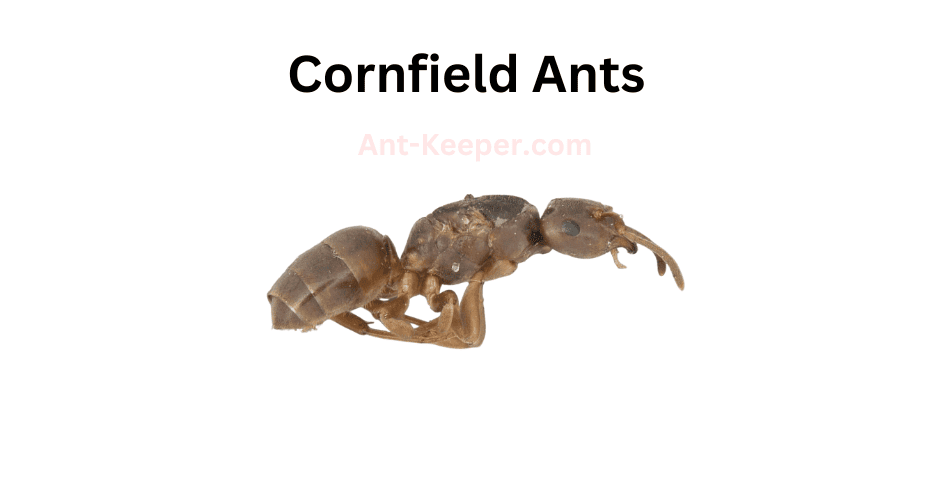
Cornfield ants, also known as Lasius neoniger, are a species of ant that belong to the Formicidae family.
These ants are commonly found in agricultural fields and grasslands, where they build their nests in the soil.
They are known for their ability to form large colonies, with thousands of individuals living together in a single nest.
Cornfield ants are small in size, measuring between 2.5 and 4 mm in length.
They are typically black or dark brown in color, with a shiny and smooth exoskeleton.
These ants are omnivorous, feeding on a variety of food sources including insects, seeds, and honeydew produced by aphids.
One of the most interesting aspects of cornfield ants is their ability to form symbiotic relationships with other insects.
They are known to protect and care for aphids, which in turn produce honeydew that the ants feed on.
This relationship benefits both the ants and the aphids, as the ants receive a reliable food source while the aphids are protected from predators.
Cornfield ants are also important for their role in soil health.
Their nests help to aerate the soil and improve its structure, which can benefit plant growth.
Additionally, their foraging activities help to distribute nutrients throughout the soil.
Overall, cornfield ants are an important species in agricultural ecosystems.
Their ability to form large colonies and symbiotic relationships with other insects make them a fascinating subject for study.
57) Yellow Meadow Ants, Lasius Flavus
Yellow Meadow Ants, also known as Lasius flavus, are a species of ant that belong to the Formicidae family.
They are commonly found in meadows, grasslands, and other open areas with well-drained soil.
These ants are small in size, measuring between 3-5mm in length, and have a yellowish-brown coloration.
Yellow Meadow Ants are social insects that live in colonies consisting of a queen, male ants, and worker ants.
The queen is responsible for laying eggs, while the worker ants are responsible for foraging for food, caring for the young, and defending the colony.
The male ants are responsible for mating with the queen.
These ants are omnivorous, meaning they feed on both plant and animal matter.
They primarily feed on honeydew, a sweet substance produced by aphids and other insects, as well as other insects and small invertebrates.
Yellow Meadow Ants are also known to cultivate and protect aphids, which they use as a source of food.
Yellow Meadow Ants are important members of their ecosystem, as they help to aerate the soil and control the populations of other insects.
They are also preyed upon by a variety of animals, including birds, spiders, and other insects.
Overall, Yellow Meadow Ants are fascinating creatures that play an important role in their environment.
Their social behavior and unique adaptations make them a valuable subject of study for scientists and nature enthusiasts alike.
58) Moisture Ants, Lasius Murphyi

Moisture ants are a type of ant that is commonly found in damp environments.
They are known for their ability to thrive in areas with high levels of moisture, such as in rotting wood or in soil that is constantly moist.
These ants are typically small in size, measuring only a few millimeters in length, and are usually yellow or brown in color.
Moisture ants are social insects that live in colonies, with each colony consisting of a queen, workers, and soldiers.
The queen is responsible for laying eggs, while the workers and soldiers are responsible for maintaining the colony and protecting it from predators.
One of the unique characteristics of moisture ants is their ability to create satellite colonies.
These colonies are established in nearby locations and are connected to the main colony by a network of tunnels.
This allows the ants to expand their territory and increase their chances of survival.
Moisture ants are also known for their ability to control the moisture levels in their environment.
They do this by building intricate nests that are designed to regulate the humidity levels inside.
This is important for the survival of the colony, as too much moisture can lead to the growth of harmful fungi and bacteria.
Overall, moisture ants are fascinating creatures that have adapted to thrive in environments that would be inhospitable to many other species.
Their ability to control moisture levels and create satellite colonies makes them a formidable force in their ecosystem.
59) Labour Day Ants, Lasius Neoniger
The Labour Day Ants, also known as the May Day Ants, are a species of ants that are commonly found in temperate regions around the world.
These ants are known for their hardworking nature and their ability to work together as a team to achieve their goals.
The Labour Day Ants are social insects that live in large colonies, which can consist of thousands of individuals.
The colony is usually led by a queen ant, who is responsible for laying eggs and producing new members of the colony.
The other ants in the colony are divided into different castes, including workers, soldiers, and reproductive ants.
The workers are the most numerous members of the colony and are responsible for gathering food, caring for the young, and maintaining the nest.
These ants are known for their tireless work ethic and their ability to work together to accomplish tasks.
They are also known for their ability to carry objects that are many times their own body weight.
The soldiers are responsible for defending the colony from predators and other threats.
These ants have larger heads and mandibles than the workers and are capable of delivering a painful bite to any intruders.
The reproductive ants are responsible for mating and producing new members of the colony.
These ants have wings and are capable of flying to new locations to start new colonies.
Overall, the Labour Day Ants are a fascinating species of ants that are known for their hardworking nature and their ability to work together as a team.
They are an important part of many ecosystems and play a vital role in maintaining the balance of nature.
60) Black Garden Ants, Lasius Niger
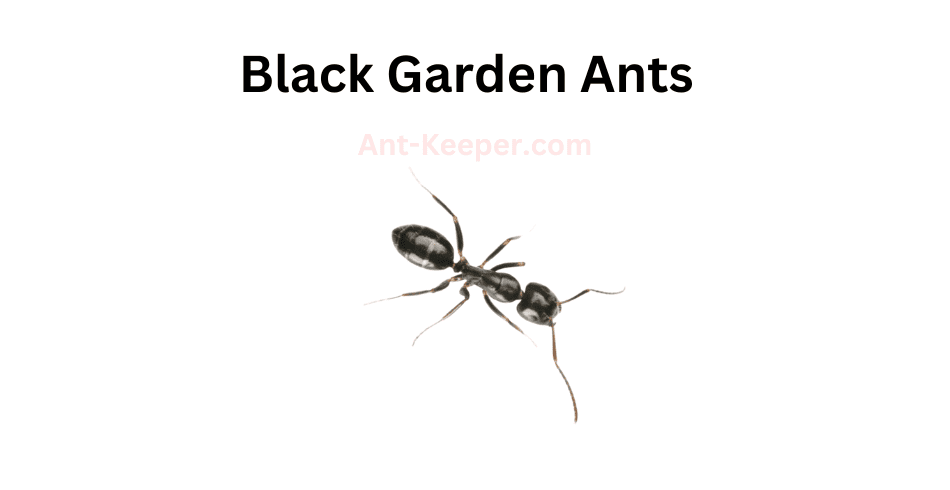
The Black Garden Ant, also known as Lasius niger, is a common species of ant found in many parts of the world.
These ants are typically black or dark brown in color and range in size from 2.5 to 4 mm in length.
Black Garden Ants are social insects that live in large colonies, which can contain thousands of individuals.
The colony is typically led by a queen ant, who is responsible for laying eggs and producing new workers.
The workers are responsible for foraging for food, caring for the young, and defending the colony from predators.
These ants are omnivorous and will eat a variety of foods, including insects, nectar, and honeydew.
They are also known to farm aphids, which they protect and feed in exchange for the sweet honeydew they produce.
Black Garden Ants are important members of their ecosystem, as they help to aerate soil and control populations of other insects.
However, they can also be considered pests when they invade homes and gardens in search of food and shelter.
Overall, the Black Garden Ant is a fascinating and important species of ant that plays a vital role in many ecosystems around the world.
61) Moisture Ants, Lasius Subglaber

Moisture ants are a type of ant that is commonly found in damp environments.
They are known for their ability to thrive in areas with high levels of moisture, such as in rotting wood or in soil that is constantly moist.
These ants are typically small in size, measuring only a few millimeters in length, and are usually yellow or brown in color.
Moisture ants are social insects that live in colonies, with each colony consisting of a queen, workers, and soldiers.
The queen is responsible for laying eggs, while the workers and soldiers are responsible for maintaining the colony and protecting it from predators.
One of the unique characteristics of moisture ants is their ability to create satellite colonies.
These colonies are established in nearby locations and are connected to the main colony by a network of tunnels.
This allows the ants to expand their territory and increase their chances of survival.
Moisture ants are also known for their ability to control the moisture levels in their environment.
They do this by building intricate nests that are designed to regulate the humidity levels inside.
This is important for the survival of the colony, as too much moisture can lead to the growth of harmful fungi and bacteria.
Overall, moisture ants are fascinating creatures that have adapted to thrive in environments that would be inhospitable to many other species.
Their ability to control moisture levels and create satellite colonies makes them a formidable force in their ecosystem.
62) Mossy Thin Ants, Leptothorax Muscorum
Mossy Thin Ants, also known as Leptogenys attenuata, are a species of ants that belong to the subfamily Ponerinae.
These ants are typically found in forested areas and are known for their slender and elongated bodies, which are covered in a moss-like texture.
Mossy Thin Ants are typically black or dark brown in color and have long, thin legs that allow them to move quickly and efficiently through their environment.
They are also known for their large mandibles, which they use to capture and subdue their prey.
These ants are primarily carnivorous and feed on a variety of insects and other small invertebrates.
They are also known to scavenge for food and will consume dead animals and other organic matter.
Mossy Thin Ants are social insects and live in colonies that can range in size from a few dozen to several hundred individuals.
The colonies are typically led by a queen ant, who is responsible for laying eggs and maintaining the overall health of the colony.
Despite their small size, Mossy Thin Ants play an important role in their ecosystem.
They help to control the populations of other insects and contribute to the overall health of the forest ecosystem.
63) Leptothorax Retractus
Leptothorax Retractus is a species of ant belonging to the Formicidae family.
These ants are small in size, measuring between 2.5 to 3.5 millimeters in length.
They are typically black or dark brown in color, with a shiny and smooth exoskeleton.
Leptothorax Retractus ants are known for their unique nesting behavior.
They are social insects that live in small colonies consisting of a few dozen to a few hundred individuals.
These ants prefer to nest in small crevices or cracks in rocks, logs, or soil.
They are also known to nest in the hollow stems of plants.
These ants are omnivorous, feeding on a variety of food sources including insects, nectar, and honeydew.
They are also known to scavenge for dead insects and other organic matter.
Leptothorax Retractus ants have a unique reproductive system.
They are haplodiploid, meaning that females develop from fertilized eggs and males develop from unfertilized eggs.
This system allows for the production of more females, which are essential for the survival and growth of the colony.
Overall, Leptothorax Retractus ants are fascinating creatures with unique nesting behavior and reproductive systems.
They play an important role in their ecosystem as predators and scavengers, and their small size makes them an important food source for many other animals.
64) Furrowed Ants, Myrmica Alaskensis

Furrowed ants, also known as Pheidole ruginoda, are a species of ant that belong to the family Formicidae.
These ants are commonly found in various habitats such as forests, grasslands, and deserts.
They are known for their distinctive appearance, with a furrowed head and thorax, and a smooth and shiny abdomen.
Furrowed ants are social insects that live in colonies, which can range in size from a few hundred to several thousand individuals.
The colony is typically headed by a queen ant, whose primary role is to lay eggs.
The workers, which are sterile females, are responsible for foraging, nest maintenance, and caring for the young.
These ants are omnivorous, meaning they feed on both plant and animal matter.
Their diet consists of seeds, insects, and other small invertebrates.
They are also known to tend to aphids, which produce a sugary substance that the ants feed on.
Furrowed ants are known for their aggressive behavior, and will defend their colony fiercely against intruders.
They have been observed engaging in territorial battles with other ant species, and will even attack larger insects such as grasshoppers and beetles.
Overall, furrowed ants are an important part of many ecosystems, playing a crucial role in seed dispersal and soil aeration.
Their unique appearance and behavior make them a fascinating subject for study and observation.
65) Alaskan Fire Ants, Myrmica Americana
The Alaskan Fire Ants (Solenopsis spp.) are a species of ants that belong to the family Formicidae.
They are known for their aggressive behavior and painful sting, which can cause a burning sensation and swelling in humans and animals.
These ants are typically reddish-brown in color and range in size from 2 to 6 mm in length.
Alaskan Fire Ants are social insects that live in colonies consisting of thousands of individuals.
The colony is headed by a queen ant, whose sole purpose is to lay eggs.
The workers, which are sterile females, are responsible for foraging, caring for the young, and defending the colony.
The males, or drones, are produced solely for the purpose of mating with the queen.
These ants are omnivorous, feeding on a variety of foods including insects, seeds, and nectar.
They are also known to scavenge for food and will attack and kill other insects to feed their colony.
Alaskan Fire Ants are known for their ability to adapt to a wide range of environments, including both natural and urban areas.
They are often found in disturbed habitats such as agricultural fields, roadsides, and urban parks.
These ants are also known to invade homes and buildings, where they can cause damage to electrical systems and other structures.
Overall, the Alaskan Fire Ants are a highly adaptable and aggressive species of ants that can cause significant problems for humans and animals.
It is important to take precautions when encountering these ants and to seek medical attention if stung.
66) Furrowed Ants, Myrmica Brevispinosa

Furrowed ants, also known as Pheidole ruginoda, are a species of ant that belong to the family Formicidae.
These ants are commonly found in various habitats such as forests, grasslands, and deserts.
They are known for their distinctive appearance, with a furrowed head and thorax, and a smooth and shiny abdomen.
Furrowed ants are social insects that live in colonies, which can range in size from a few hundred to several thousand individuals.
The colony is typically headed by a queen ant, whose primary role is to lay eggs.
The workers, which are sterile females, are responsible for foraging, nest maintenance, and caring for the young.
These ants are omnivorous, meaning they feed on both plant and animal matter.
Their diet consists of seeds, insects, and other small invertebrates.
They are also known to tend to aphids, which produce a sugary substance that the ants feed on.
Furrowed ants are known for their aggressive behavior, and will defend their colony fiercely against intruders.
They have been observed engaging in territorial battles with other ant species, and will even attack larger insects such as grasshoppers and beetles.
Overall, furrowed ants are an important part of many ecosystems, playing a crucial role in seed dispersal and soil aeration.
Their unique appearance and behavior make them a fascinating subject for study and observation.
67) Furrowed Ants, Myrmica Detritinodis

Furrowed ants, also known as Pheidole ruginoda, are a species of ant that belong to the family Formicidae.
These ants are commonly found in various habitats such as forests, grasslands, and deserts.
They are known for their distinctive appearance, with a furrowed head and thorax, and a smooth and shiny abdomen.
Furrowed ants are social insects that live in colonies, which can range in size from a few hundred to several thousand individuals.
The colony is typically headed by a queen ant, whose primary role is to lay eggs.
The workers, which are sterile females, are responsible for foraging, nest maintenance, and caring for the young.
These ants are omnivorous, meaning they feed on both plant and animal matter.
Their diet consists of seeds, insects, and other small invertebrates.
They are also known to tend to aphids, which produce a sugary substance that the ants feed on.
Furrowed ants are known for their aggressive behavior, and will defend their colony fiercely against intruders.
They have been observed engaging in territorial battles with other ant species, and will even attack larger insects such as grasshoppers and beetles.
Overall, furrowed ants are an important part of many ecosystems, playing a crucial role in seed dispersal and soil aeration.
Their unique appearance and behavior make them a fascinating subject for study and observation.
68) Furrowed Ants, Myrmica Fracticornis

Furrowed ants, also known as Pheidole ruginoda, are a species of ant that belong to the family Formicidae.
These ants are commonly found in various habitats such as forests, grasslands, and deserts.
They are known for their distinctive appearance, with a furrowed head and thorax, and a smooth and shiny abdomen.
Furrowed ants are social insects that live in colonies, which can range in size from a few hundred to several thousand individuals.
The colony is typically headed by a queen ant, whose primary role is to lay eggs.
The workers, which are sterile females, are responsible for foraging, nest maintenance, and caring for the young.
These ants are omnivorous, meaning they feed on both plant and animal matter.
Their diet consists of seeds, insects, and other small invertebrates.
They are also known to tend to aphids, which produce a sugary substance that the ants feed on.
Furrowed ants are known for their aggressive behavior, and will defend their colony fiercely against intruders.
They have been observed engaging in territorial battles with other ant species, and will even attack larger insects such as grasshoppers and beetles.
Overall, furrowed ants are an important part of many ecosystems, playing a crucial role in seed dispersal and soil aeration.
Their unique appearance and behavior make them a fascinating subject for study and observation.
69) Furrowed Ants, Myrmica Lobifrons

Furrowed ants, also known as Pheidole ruginoda, are a species of ant that belong to the family Formicidae.
These ants are commonly found in various habitats such as forests, grasslands, and deserts.
They are known for their distinctive appearance, with a furrowed head and thorax, and a smooth and shiny abdomen.
Furrowed ants are social insects that live in colonies, which can range in size from a few hundred to several thousand individuals.
The colony is typically headed by a queen ant, whose primary role is to lay eggs.
The workers, which are sterile females, are responsible for foraging, nest maintenance, and caring for the young.
These ants are omnivorous, meaning they feed on both plant and animal matter.
Their diet consists of seeds, insects, and other small invertebrates.
They are also known to tend to aphids, which produce a sugary substance that the ants feed on.
Furrowed ants are known for their aggressive behavior, and will defend their colony fiercely against intruders.
They have been observed engaging in territorial battles with other ant species, and will even attack larger insects such as grasshoppers and beetles.
Overall, furrowed ants are an important part of many ecosystems, playing a crucial role in seed dispersal and soil aeration.
Their unique appearance and behavior make them a fascinating subject for study and observation.
70) Furrowed Ants, Myrmica Nearctica

Furrowed ants, also known as Pheidole ruginoda, are a species of ant that belong to the family Formicidae.
These ants are commonly found in various habitats such as forests, grasslands, and deserts.
They are known for their distinctive appearance, with a furrowed head and thorax, and a smooth and shiny abdomen.
Furrowed ants are social insects that live in colonies, which can range in size from a few hundred to several thousand individuals.
The colony is typically headed by a queen ant, whose primary role is to lay eggs.
The workers, which are sterile females, are responsible for foraging, nest maintenance, and caring for the young.
These ants are omnivorous, meaning they feed on both plant and animal matter.
Their diet consists of seeds, insects, and other small invertebrates.
They are also known to tend to aphids, which produce a sugary substance that the ants feed on.
Furrowed ants are known for their aggressive behavior, and will defend their colony fiercely against intruders.
They have been observed engaging in territorial battles with other ant species, and will even attack larger insects such as grasshoppers and beetles.
Overall, furrowed ants are an important part of many ecosystems, playing a crucial role in seed dispersal and soil aeration.
Their unique appearance and behavior make them a fascinating subject for study and observation.
71) Furrowed Ants, Myrmica Spatulata

Furrowed ants, also known as Pheidole ruginoda, are a species of ant that belong to the family Formicidae.
These ants are commonly found in various habitats such as forests, grasslands, and deserts.
They are known for their distinctive appearance, with a furrowed head and thorax, and a smooth and shiny abdomen.
Furrowed ants are social insects that live in colonies, which can range in size from a few hundred to several thousand individuals.
The colony is typically headed by a queen ant, whose primary role is to lay eggs.
The workers, which are sterile females, are responsible for foraging, nest maintenance, and caring for the young.
These ants are omnivorous, meaning they feed on both plant and animal matter.
Their diet consists of seeds, insects, and other small invertebrates.
They are also known to tend to aphids, which produce a sugary substance that the ants feed on.
Furrowed ants are known for their aggressive behavior, and will defend their colony fiercely against intruders.
They have been observed engaging in territorial battles with other ant species, and will even attack larger insects such as grasshoppers and beetles.
Overall, furrowed ants are an important part of many ecosystems, playing a crucial role in seed dispersal and soil aeration.
Their unique appearance and behavior make them a fascinating subject for study and observation.
72) Big Headed Ants, Pheidole Bilimeki

Big Headed Ants, also known as Pheidole megacephala, are a species of ant that belong to the family Formicidae.
These ants are known for their distinctive large heads, which are used for defense and communication within their colonies.
Big Headed Ants are typically found in tropical and subtropical regions, where they build their nests in soil, leaf litter, and other organic matter.
They are omnivorous, feeding on a variety of insects, seeds, and other small organisms.
One of the most interesting aspects of Big Headed Ants is their social behavior.
They live in large colonies, with a queen ant at the center of the hierarchy.
The queen is responsible for laying eggs, while the other ants in the colony perform various tasks such as foraging for food, caring for the young, and defending the colony from predators.
Big Headed Ants are also known for their ability to displace other ant species in their habitats.
They are aggressive and have been known to attack and kill other ants, as well as compete with them for resources.
Despite their aggressive behavior, Big Headed Ants are not considered a major pest species.
However, their ability to displace other ant species and their potential impact on native ecosystems make them an important species to study and monitor.
73) Amazon Ants, Polyergus Bicolor

The Amazon Ant, also known as the Polyergus breviceps, is a species of ant that belongs to the Formicidae family.
These ants are known for their unique behavior of raiding other ant colonies and stealing their brood to raise as their own.
The Amazon Ants are typically black or dark brown in color and have a slender body with long legs.
They are relatively small in size, with workers measuring around 4-5 mm in length.
The queen ants are slightly larger, measuring around 7-8 mm in length.
These ants are social insects and live in large colonies that can consist of thousands of individuals.
The colonies are usually divided into different castes, including workers, soldiers, and reproductive ants.
The workers are responsible for foraging, caring for the brood, and maintaining the nest, while the soldiers defend the colony from predators.
One of the most interesting aspects of the Amazon Ants is their unique behavior of raiding other ant colonies.
They do this by sending out a group of specialized workers, known as raiders, to infiltrate the target colony.
The raiders then steal the brood of the target colony and bring it back to their own nest.
Once the stolen brood hatches, the Amazon Ants use it to increase their own workforce.
The Amazon Ants are also known for their symbiotic relationship with a species of butterfly known as the Maculinea rebeli.
The butterfly larvae feed on the brood of the Amazon Ants, but in return, they secrete a substance that makes the ants more aggressive and better at raiding other colonies.
Overall, the Amazon Ants are fascinating creatures with unique behaviors and adaptations that allow them to thrive in their environment.
74) Amazon Ants, Polyergus Lucidus

The Amazon Ant, also known as the Polyergus breviceps, is a species of ant that belongs to the Formicidae family.
These ants are known for their unique behavior of raiding other ant colonies and stealing their brood to raise as their own.
The Amazon Ants are typically black or dark brown in color and have a slender body with long legs.
They are relatively small in size, with workers measuring around 4-5 mm in length.
The queen ants are slightly larger, measuring around 7-8 mm in length.
These ants are social insects and live in large colonies that can consist of thousands of individuals.
The colonies are usually divided into different castes, including workers, soldiers, and reproductive ants.
The workers are responsible for foraging, caring for the brood, and maintaining the nest, while the soldiers defend the colony from predators.
One of the most interesting aspects of the Amazon Ants is their unique behavior of raiding other ant colonies.
They do this by sending out a group of specialized workers, known as raiders, to infiltrate the target colony.
The raiders then steal the brood of the target colony and bring it back to their own nest.
Once the stolen brood hatches, the Amazon Ants use it to increase their own workforce.
The Amazon Ants are also known for their symbiotic relationship with a species of butterfly known as the Maculinea rebeli.
The butterfly larvae feed on the brood of the Amazon Ants, but in return, they secrete a substance that makes the ants more aggressive and better at raiding other colonies.
Overall, the Amazon Ants are fascinating creatures with unique behaviors and adaptations that allow them to thrive in their environment.
75) Amazon Ants, Polyergus Montivagus

The Amazon Ant, also known as the Polyergus breviceps, is a species of ant that belongs to the Formicidae family.
These ants are known for their unique behavior of raiding other ant colonies and stealing their brood to raise as their own.
The Amazon Ants are typically black or dark brown in color and have a slender body with long legs.
They are relatively small in size, with workers measuring around 4-5 mm in length.
The queen ants are slightly larger, measuring around 7-8 mm in length.
These ants are social insects and live in large colonies that can consist of thousands of individuals.
The colonies are usually divided into different castes, including workers, soldiers, and reproductive ants.
The workers are responsible for foraging, caring for the brood, and maintaining the nest, while the soldiers defend the colony from predators.
One of the most interesting aspects of the Amazon Ants is their unique behavior of raiding other ant colonies.
They do this by sending out a group of specialized workers, known as raiders, to infiltrate the target colony.
The raiders then steal the brood of the target colony and bring it back to their own nest.
Once the stolen brood hatches, the Amazon Ants use it to increase their own workforce.
The Amazon Ants are also known for their symbiotic relationship with a species of butterfly known as the Maculinea rebeli.
The butterfly larvae feed on the brood of the Amazon Ants, but in return, they secrete a substance that makes the ants more aggressive and better at raiding other colonies.
Overall, the Amazon Ants are fascinating creatures with unique behaviors and adaptations that allow them to thrive in their environment.
76) Small Honey Ants, Prenolepis Imparis
Small Honey Ants, also known as Prenolepis imparis, are a species of ant that belong to the family Formicidae.
They are typically small in size, measuring between 2.5 to 3.5 mm in length.
These ants are commonly found in forests, grasslands, and other natural habitats.
Small Honey Ants are known for their sweet tooth, as they primarily feed on honeydew produced by aphids and other insects.
They also consume nectar and other sugary substances.
In addition to their sweet diet, these ants also feed on small insects and other arthropods.
Small Honey Ants are social insects, living in colonies that can range in size from a few dozen to several thousand individuals.
The colony is typically led by a queen ant, who is responsible for laying eggs and maintaining the overall health of the colony.
The workers, which make up the majority of the colony, are responsible for foraging for food, caring for the young, and defending the colony from predators.
One unique characteristic of Small Honey Ants is their ability to store food in their bodies.
The workers have a specialized crop, called a "social stomach," which allows them to store and transport food back to the colony.
This food storage system is particularly important during times of scarcity, as it allows the colony to survive on stored food until more resources become available.
Overall, Small Honey Ants are an important part of many ecosystems, playing a key role in pollination and nutrient cycling.
While they may be a nuisance to humans when they invade homes or gardens, they are generally harmless and can be easily controlled with non-toxic methods.
77) Spider Egg Ants, Proceratium Silaceum
The Spider Egg Ant, also known as the Pheidole pallidula, is a species of ant that belongs to the family Formicidae.
These ants are commonly found in various habitats, including forests, grasslands, and urban areas.
They are known for their unique behavior of stealing spider eggs and raising them as their own.
The Spider Egg Ants are small in size, measuring around 2-3 mm in length.
They have a yellowish-brown color and a distinct head with large mandibles.
These ants are known for their aggressive behavior and are often seen attacking other ant colonies to steal their food and resources.
One of the most interesting behaviors of the Spider Egg Ants is their habit of stealing spider eggs.
They locate spider egg sacs and carry them back to their nest.
Once inside the nest, the ants take care of the eggs as if they were their own.
They protect the eggs from predators and provide them with food until they hatch.
The Spider Egg Ants are also known for their complex social structure.
They have a queen ant that is responsible for laying eggs and reproducing.
The worker ants are responsible for foraging, caring for the young, and defending the colony.
The soldier ants are larger and have stronger mandibles, which they use to protect the colony from predators.
In conclusion, the Spider Egg Ants are a fascinating species of ant that exhibit unique behaviors such as stealing spider eggs and raising them as their own.
They have a complex social structure and are known for their aggressive behavior.
These ants play an important role in their ecosystem and are a valuable subject of study for scientists.
78) Leaf-Litter Ants, Stenamma Brevicorne

Leaf-litter ants are a group of ants that are commonly found in forested areas around the world.
They are known for their ability to live and forage in the leaf litter layer of the forest floor, where they play an important role in nutrient cycling and soil health.
Leaf-litter ants are typically small in size, ranging from 1-5mm in length.
They are often reddish-brown or black in color, and have a slender, elongated body shape.
These ants are social insects, living in colonies that can range in size from a few dozen to several thousand individuals.
One of the key characteristics of leaf-litter ants is their ability to forage for food in the leaf litter layer.
They are known to feed on a variety of organic matter, including dead insects, fungi, and plant material.
Leaf-litter ants are also important decomposers, breaking down organic matter and returning nutrients to the soil.
In addition to their role in nutrient cycling, leaf-litter ants also play an important role in the ecosystem as prey for other animals.
They are a food source for a variety of predators, including birds, reptiles, and other insects.
Overall, leaf-litter ants are an important and fascinating group of insects that play a critical role in maintaining the health and functioning of forest ecosystems around the world.
79) Diecks Slender Ants, Stenamma Diecki
Dieck's Slender Ants, also known as Leptomyrmex diecki, are a species of ant that belong to the subfamily Dolichoderinae.
These ants are known for their slender and elongated bodies, which are typically black or dark brown in color.
They are relatively small in size, with workers measuring between 3-5mm in length.
Dieck's Slender Ants are typically found in forested areas, where they build their nests in soil or leaf litter.
They are known to be highly territorial and aggressive towards other ant species, often engaging in fierce battles to defend their territory.
One of the most interesting aspects of Dieck's Slender Ants is their unique method of communication.
These ants use a combination of chemical signals and physical cues to communicate with one another, including tapping their antennae and legs to convey messages.
In terms of diet, Dieck's Slender Ants are omnivorous and feed on a variety of food sources, including insects, nectar, and honeydew.
They are also known to cultivate and protect aphids, which produce honeydew that the ants feed on.
Overall, Dieck's Slender Ants are a fascinating species of ant that play an important role in their ecosystem.
Their unique physical characteristics and communication methods make them a fascinating subject for scientific study.
80) Vampire Ants, Stigmatomma Pallipes

Vampire ants, also known as blood-sucking ants, are a species of ants that feed on the blood of other insects.
These ants are known for their unique feeding behavior, which involves biting into the exoskeleton of their prey and then sucking out their blood.
Vampire ants are typically found in tropical and subtropical regions, where they live in colonies of up to several thousand individuals.
They are known for their aggressive behavior and will attack other insects, including larger prey such as grasshoppers and caterpillars.
One of the most interesting aspects of vampire ants is their ability to adapt to their environment.
In some cases, these ants have been known to feed on the blood of their own colony members when other sources of food are scarce.
Vampire ants are also known for their unique physical characteristics.
They have long, curved mandibles that are used to bite into the exoskeleton of their prey.
They also have specialized mouthparts that allow them to suck out the blood of their victims.
Despite their aggressive behavior and blood-sucking tendencies, vampire ants play an important role in their ecosystem.
They help to control the populations of other insects and contribute to the overall balance of their environment.
Overall, vampire ants are a fascinating species of ants that have adapted to their environment in unique and interesting ways.
Their behavior and physical characteristics make them a subject of interest for scientists and nature enthusiasts alike.
81) Miniature Trap-Jaw Ants, Strumigenys Pergandei
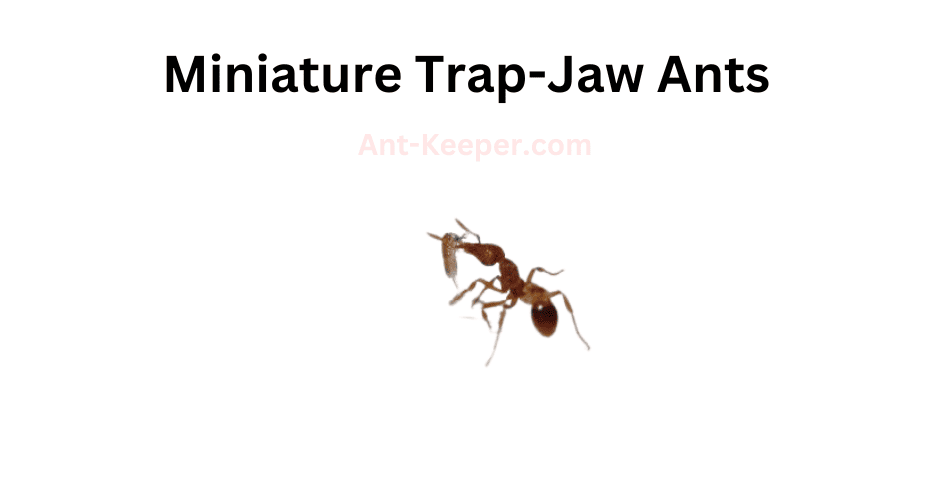
The Miniature Trap-Jaw Ants, scientifically known as Odontomachus sp., are a species of ants that belong to the family Formicidae.
These ants are known for their unique and powerful mandibles, which they use to capture prey and defend their colonies.
The Miniature Trap-Jaw Ants are relatively small in size, measuring only a few millimeters in length.
They have a dark brown or black coloration and a slender body shape.
Their most distinctive feature is their mandibles, which are elongated and can snap shut with incredible force.
These mandibles are used to capture prey, crush seeds, and defend the colony against predators.
The Miniature Trap-Jaw Ants are found in a variety of habitats, including forests, grasslands, and deserts.
They are known to be active during the day and are often seen foraging for food.
These ants are omnivorous and feed on a variety of food sources, including insects, nectar, and seeds.
The Miniature Trap-Jaw Ants are social insects and live in colonies that can range in size from a few dozen to several thousand individuals.
The colony is typically led by a queen, who is responsible for laying eggs and maintaining the colony's population.
The workers are responsible for foraging, caring for the young, and defending the colony.
Overall, the Miniature Trap-Jaw Ants are fascinating insects that have evolved unique adaptations to survive in their environment.
Their powerful mandibles and social behavior make them an important part of many ecosystems.
82) Odorous House Ants, Tapinoma Sessile
Odorous House Ants, also known as Tapinoma sessile, are a common species of ant found in many parts of the world.
These ants are small, measuring only 2.4 to 3.3 mm in length, and are typically brown or black in color.
One of the most distinctive features of Odorous House Ants is their odor.
When crushed, these ants emit a strong, unpleasant smell that has been described as resembling rotten coconut or blue cheese.
This odor is used by the ants to communicate with one another and to mark their trails.
Odorous House Ants are social insects that live in large colonies.
These colonies can contain thousands of individual ants, with multiple queens and workers.
The workers are responsible for foraging for food, caring for the young, and defending the colony.
These ants are omnivorous, meaning they will eat both plant and animal matter.
They are known to feed on a variety of foods, including sweets, meats, and fats.
They are also attracted to moisture, and will often nest near sources of water.
Odorous House Ants are considered a nuisance pest, as they can invade homes and buildings in search of food and shelter.
They are not known to cause any significant damage, but their presence can be unsightly and their odor can be unpleasant.
Control of Odorous House Ants typically involves locating and eliminating the colony, as well as sealing up any entry points into the home or building.
Baits and insecticides can also be used to control the population.
83) Slave-Making Ants, Temnothorax Ambiguus

The Slave-Making Ants, also known as Dulosis ants, are a group of social insects that engage in a unique behavior of raiding and enslaving other ant colonies.
These ants belong to the subfamily Formicinae and are found in various parts of the world.
The Slave-Making Ants have a complex social structure, with a queen, workers, and soldiers.
The queen is responsible for laying eggs, while the workers and soldiers carry out various tasks such as foraging, nest building, and defense.
However, unlike other ant species, the Slave-Making Ants do not rely solely on their own colony for survival.
Instead, these ants raid nearby colonies of other ant species, using their superior strength and numbers to overpower the defenders.
The Slave-Making Ants then carry off the pupae of the conquered colony back to their own nest.
Once the pupae hatch, they are raised by the Slave-Making Ants and forced to work as slaves for the colony.
The Slave-Making Ants have evolved a number of adaptations to facilitate their slave-raiding behavior.
For example, they have a highly developed sense of smell, which allows them to locate and target specific ant colonies.
They also have strong mandibles and powerful stingers, which they use to subdue their prey.
Despite their aggressive behavior, the Slave-Making Ants play an important role in their ecosystem.
By raiding other ant colonies, they help to control the population of competing ant species.
Additionally, the enslaved ants provide a source of food and labor for the Slave-Making Ants, allowing them to thrive in environments where resources are scarce.
Overall, the Slave-Making Ants are a fascinating and unique species of ant, with a complex social structure and a highly specialized behavior.
While their slave-raiding behavior may seem cruel, it is an important part of their survival strategy and has helped them to thrive in a variety of environments.
84) Slave-Making Ants, Temnothorax Americanus

The Slave-Making Ants, also known as Dulosis ants, are a group of social insects that engage in a unique behavior of raiding and enslaving other ant colonies.
These ants belong to the subfamily Formicinae and are found in various parts of the world.
The Slave-Making Ants have a complex social structure, with a queen, workers, and soldiers.
The queen is responsible for laying eggs, while the workers and soldiers carry out various tasks such as foraging, nest building, and defense.
However, unlike other ant species, the Slave-Making Ants do not rely solely on their own colony for survival.
Instead, these ants raid nearby colonies of other ant species, using their superior strength and numbers to overpower the defenders.
The Slave-Making Ants then carry off the pupae of the conquered colony back to their own nest.
Once the pupae hatch, they are raised by the Slave-Making Ants and forced to work as slaves for the colony.
The Slave-Making Ants have evolved a number of adaptations to facilitate their slave-raiding behavior.
For example, they have a highly developed sense of smell, which allows them to locate and target specific ant colonies.
They also have strong mandibles and powerful stingers, which they use to subdue their prey.
Despite their aggressive behavior, the Slave-Making Ants play an important role in their ecosystem.
By raiding other ant colonies, they help to control the population of competing ant species.
Additionally, the enslaved ants provide a source of food and labor for the Slave-Making Ants, allowing them to thrive in environments where resources are scarce.
Overall, the Slave-Making Ants are a fascinating and unique species of ant, with a complex social structure and a highly specialized behavior.
While their slave-raiding behavior may seem cruel, it is an important part of their survival strategy and has helped them to thrive in a variety of environments.
85) Long-Spined Acorn Ants, Temnothorax Longispinosus
The Long-Spined Acorn Ant (Temnothorax sp.) is a species of ant that belongs to the Formicidae family.
These ants are small in size, measuring only 2-3 mm in length, and are typically reddish-brown in color.
They are known for their long spines that protrude from their thorax, which are used for defense against predators.
Long-Spined Acorn Ants are found in a variety of habitats, including forests, woodlands, and grasslands.
They are known to nest in acorns, which they hollow out to create a suitable living space.
These ants are also known to form colonies in dead wood, leaf litter, and soil.
The Long-Spined Acorn Ant is a social insect, with colonies consisting of a queen, workers, and males.
The queen is responsible for laying eggs, while the workers are responsible for foraging, caring for the young, and defending the colony.
Males are produced for the purpose of mating with new queens.
These ants are omnivorous, feeding on a variety of food sources including nectar, honeydew, and small insects.
They are also known to tend to aphids, which produce honeydew that the ants feed on.
The Long-Spined Acorn Ant is an important member of its ecosystem, playing a role in seed dispersal and nutrient cycling.
They are also preyed upon by a variety of predators, including birds, spiders, and other insects.
Overall, the Long-Spined Acorn Ant is a fascinating species of ant that plays an important role in its ecosystem.
Its unique physical characteristics and social behavior make it an interesting subject for scientific study.
Check Out Some Of Our Other Ants By Location Posts
| Types Of Ants In Buenos Aires, Argentina | Buenos Aires, the capital city of Argentina, is located in the southeastern region of South America. The city is known for its vibrant culture, rich ... |
| Types Of Ants In Pennsylvania, United States | Pennsylvania, located in the northeastern region of the United States, is a state known for its diverse environment and unique weather patterns. The state is ... |
| Types Of Ants In Distrito Federal Mexico, Mexico | Located in the heart of Mexico, Distrito Federal is a bustling region that boasts a diverse range of flora and fauna. The region is known ... |
| Types Of Ants In Liaoning, China | Liaoning, a province located in the northeastern region of China, boasts a diverse range of natural wonders. From its rugged mountains to its vast plains, ... |
| Types Of Ants In Hubei, China | Hubei, a province located in central China, is known for its diverse and unique environment. The region boasts a variety of landscapes, from mountainous regions ... |
